On my quest of chasing islands, which is my travel plan theme for the year 2019 – 2020 and after you guys asked me to take you to discover a less known destination, I opted for the Canary Islands.
The Canary Islands have been on my bucket list and I must say that I was not once disappointed by its natural beauty and its people. I would recommend going there if you looking for a relaxing destination yet with so many adventures. The plus point of the Canary Islands is that there are eight islands for you to choose for a getaway and it is far from being crowded with tourists.
An immense thanks to Itineris Travel, my local travel agency partner for assisting me upon this trip.
They offer a variety of destination packages, check their website for more information and promotional offers on other destinations.
https://www.itineris.travel/home
The Canary Islands are a Spanish archipelago off the coast of Morocco, northwest Africa. The archipelago consists of eight islands with Isla Graciosa recently been added to the lot.
I would have loved to do all 8 of them but with 2 weeks it would have just been island hopping. So we decided to go for three of them; Tenerife, Gran Canaria and Lanzarote.
TENERIFE ISLAND
All of the three islands have their own characteristics which make them quite unique and very interesting to visit. Our journey started from Vienna with a direct flight to Tenerife which is a 5-hour flight and we stayed in El Medano throughout all of our stay on the island.
To start I want to talk a little on the place we chose to stay in El Medano because I really think that when travelling we should more than ever be eco-responsible in our behaviour.
The degradation of the environment has been caused by the systematic exploitation of natural resources and the use of non-renewable sources such as petroleum and coal. That type of energy has clearly contributed to degrading the planet.
Casas Bioclimaticas Iter is a 25 isolated one family dwelling designed to take the utmost advantage of bioclimatic conditions. These houses are located on land belonging to the Wind Park of Tenerife. Each house is an autonomous unit and non-polluting inspired on ecological principles. Heating and hot water expenses can almost be eliminated by the bioclimatic design of the houses and the use of solar collectors. A desalination plant produces freshwater and the sewage water is used in a purifying plant for irrigation purposes. Any rubbish is treated to generate electric energy.
Photovoltaic panels, wind turbines, desalination plants, biomass energy ensure a continuous supply of energy to all the 25 houses within the Wind Park but also to other houses in the area.
My stay in this bioclimatic house has made me reconsider energy-saving habits and once home I will try to put in practice what I learned there.
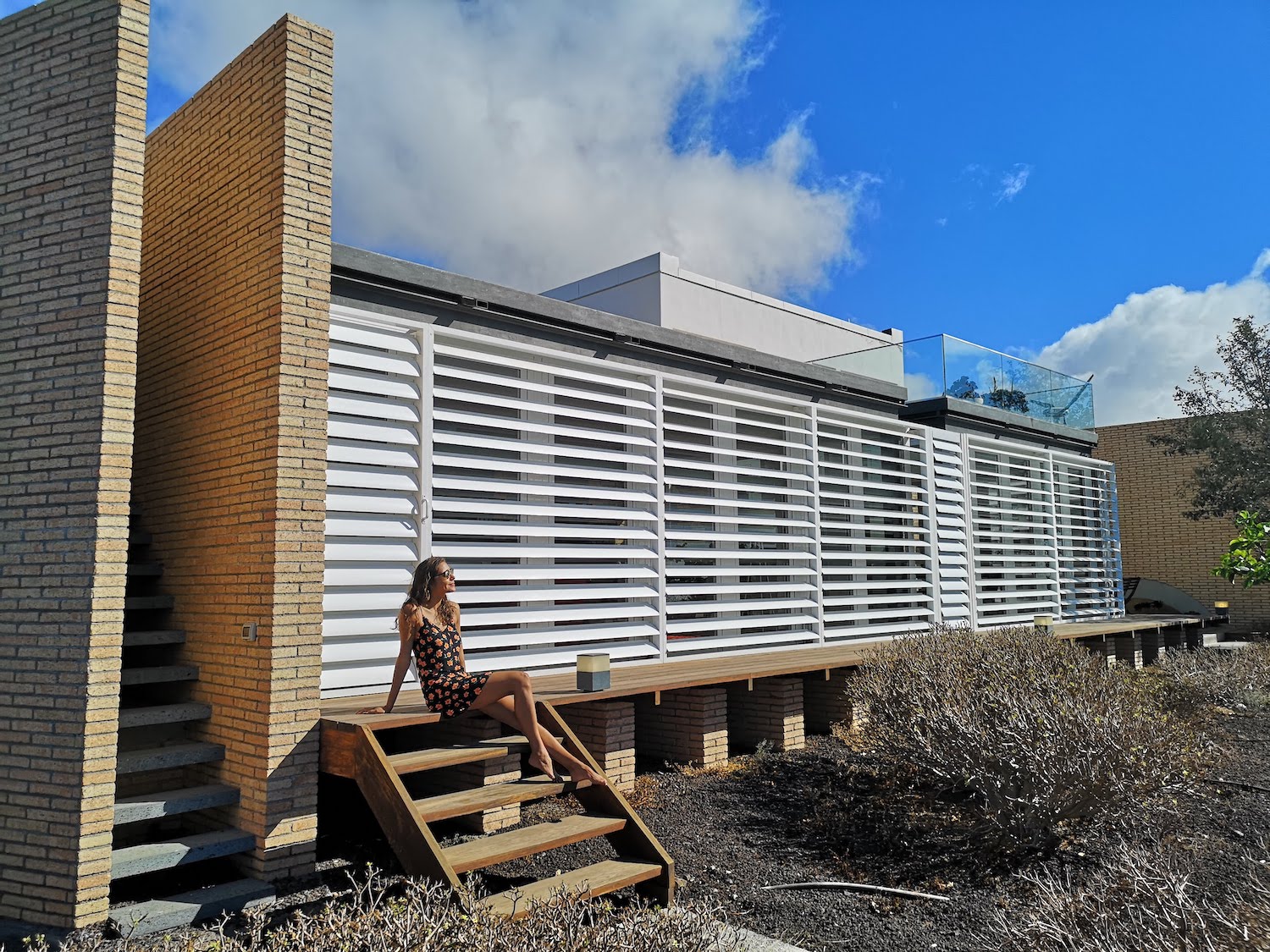

Tenerife is the biggest of the archipelago. You will need to rent a car to cover the whole island, so I recommend that you go with CICAR because they are affordable and they have offices in different parts of the islands for you to drop the cars later.
El Medano
A nice place to stay in the south of Tenerife, and if you want to avoid all the tourists, crowded and noisy area.
All over the coastal region, you can enjoy nice beaches, from black to white sandy beaches. The most known one in El Medano is Playa de la Tejita.
Montana Amarilla
This place is much the Grand Canyon look-alike with its layer band of red rocks but which opens up to the sea. You can either climb to the top of the Montana Amarilla or wait until it is low tide to walk on the rocks and access the canyons like we did. There is also a quiet beach to enjoy.
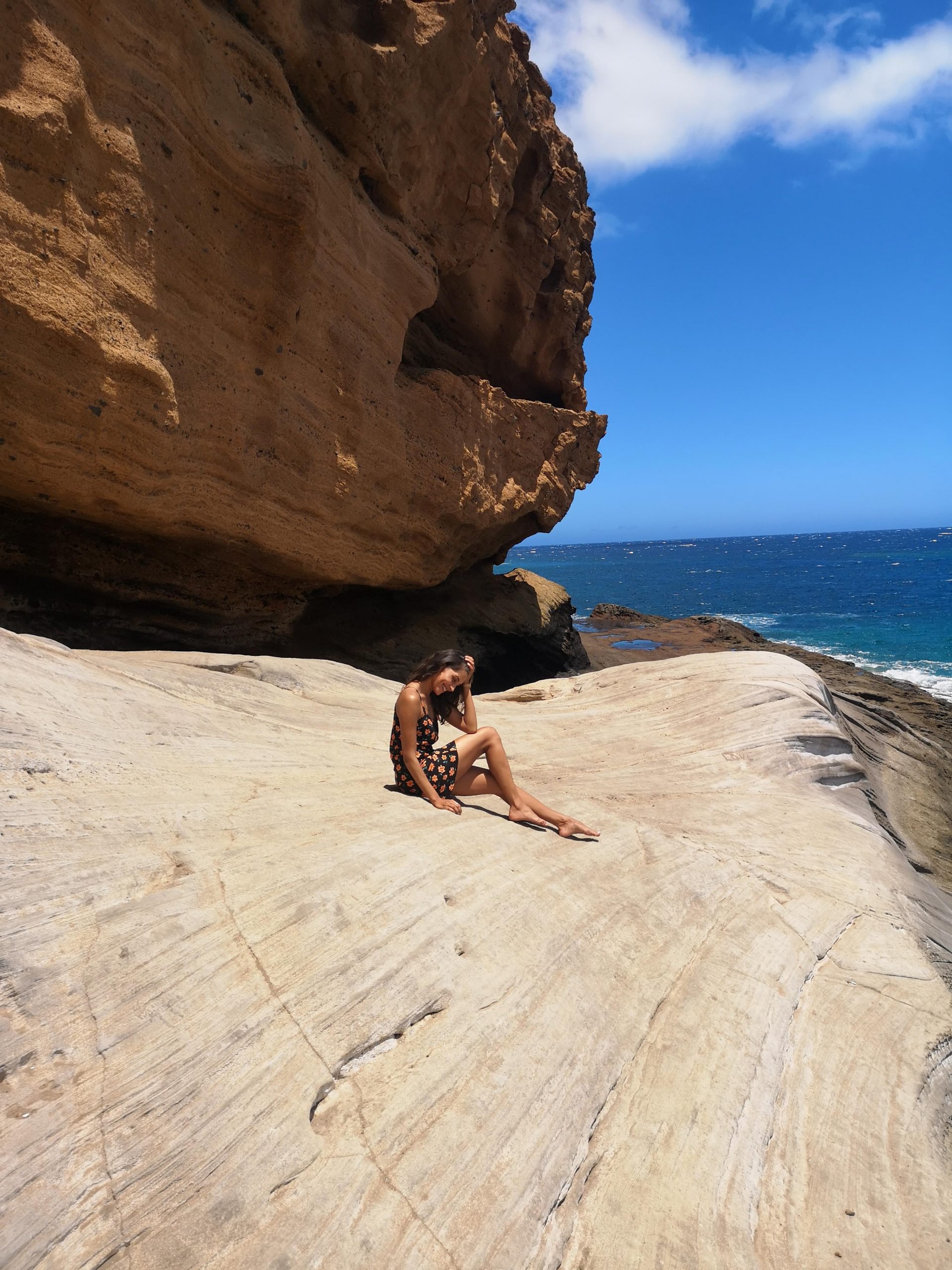
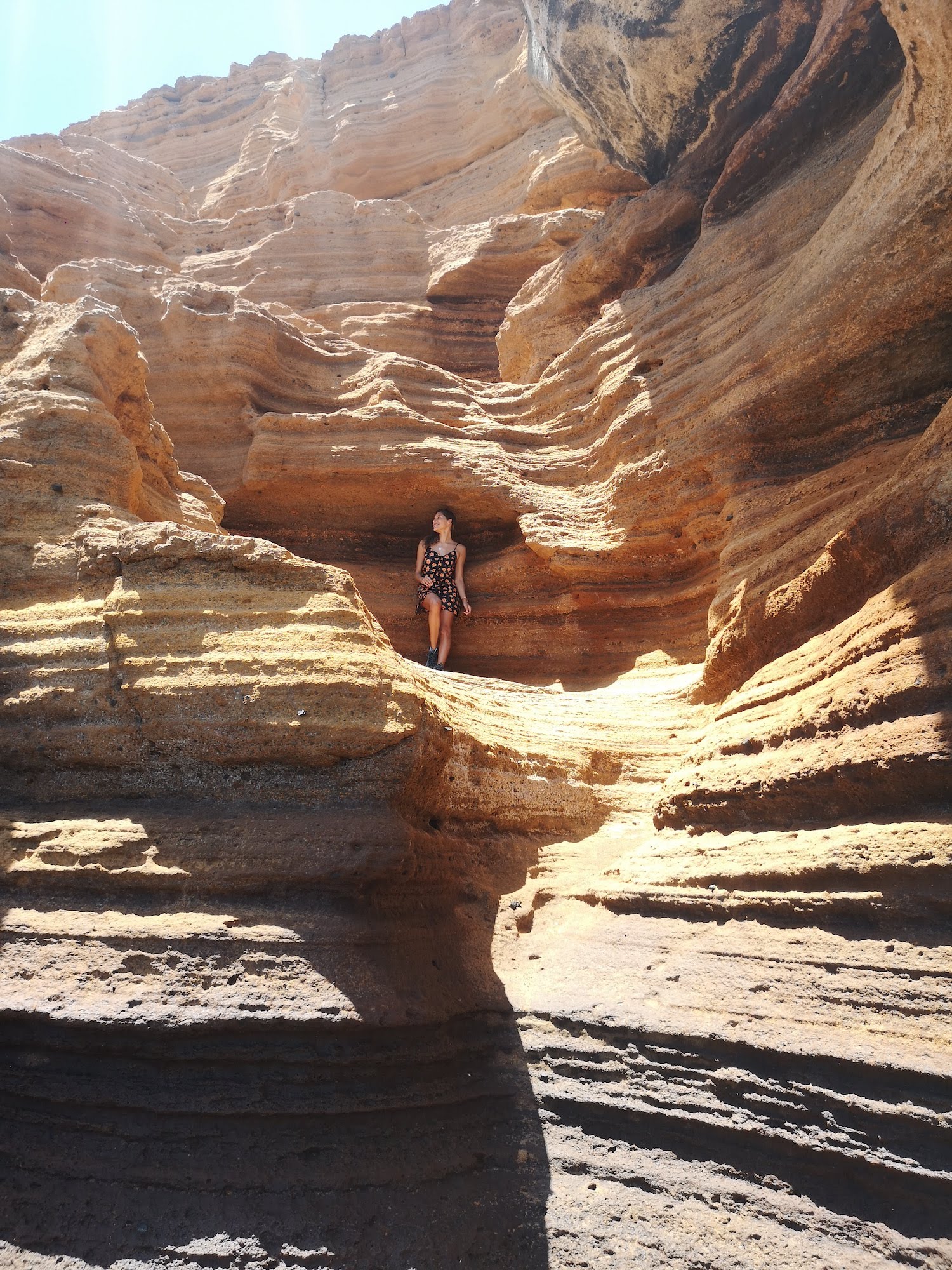
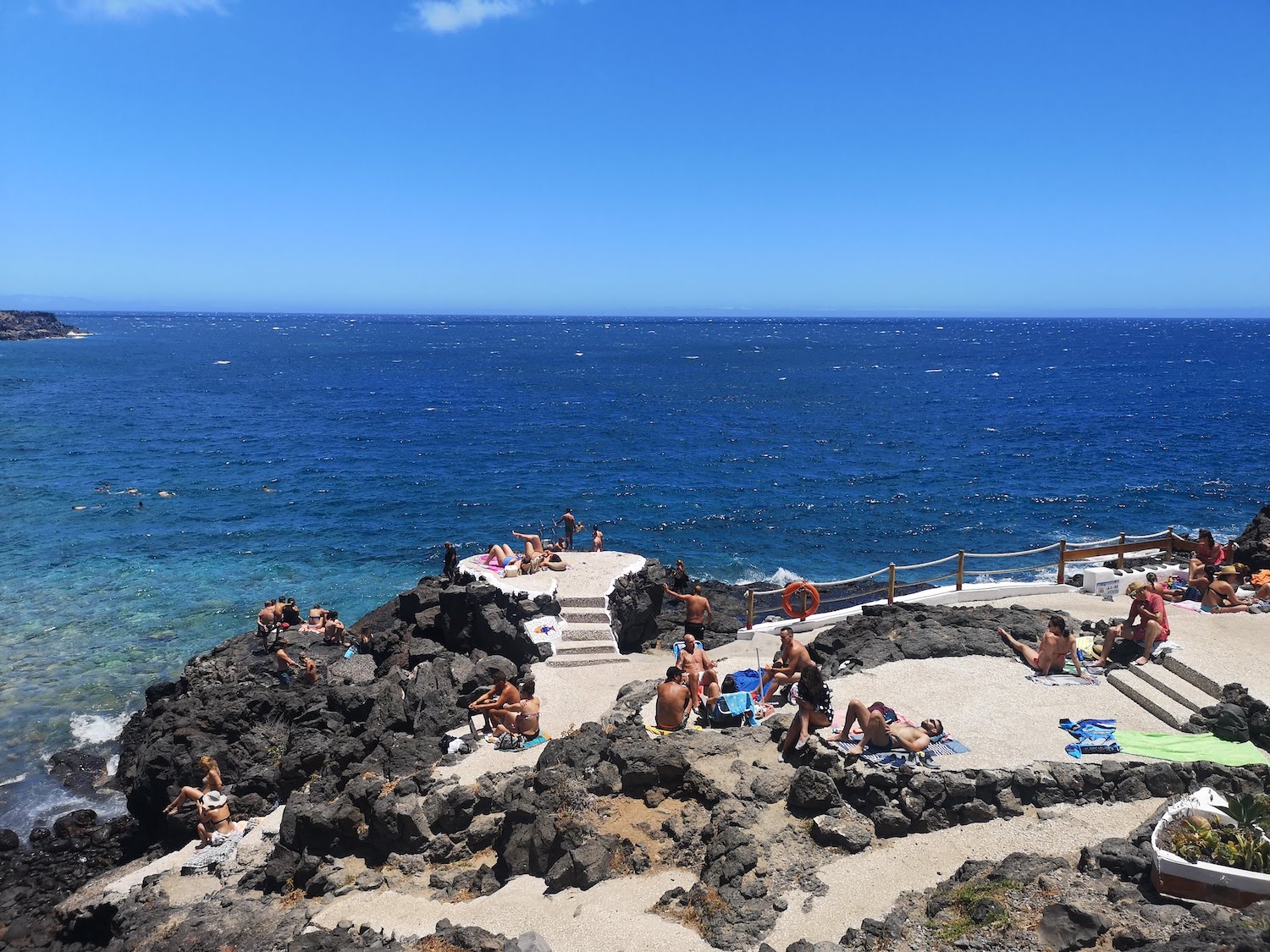
Good bites address
Definitely, my favorite address for best bites in El Medano is Lille Café. Great for breakfast, lunch and dinner. They offer everyday new specialities and whatever I had there was delicious. So save this address.
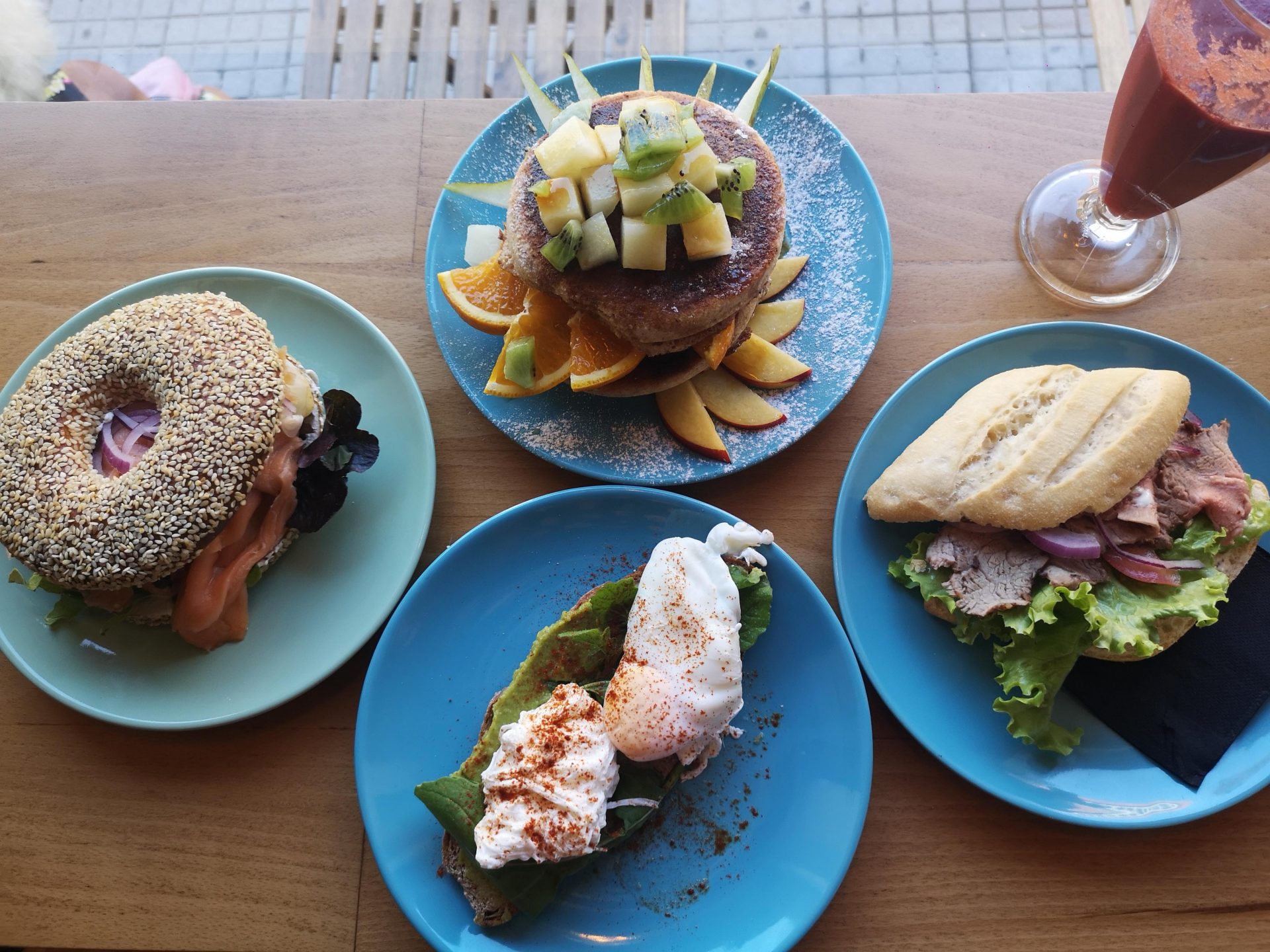
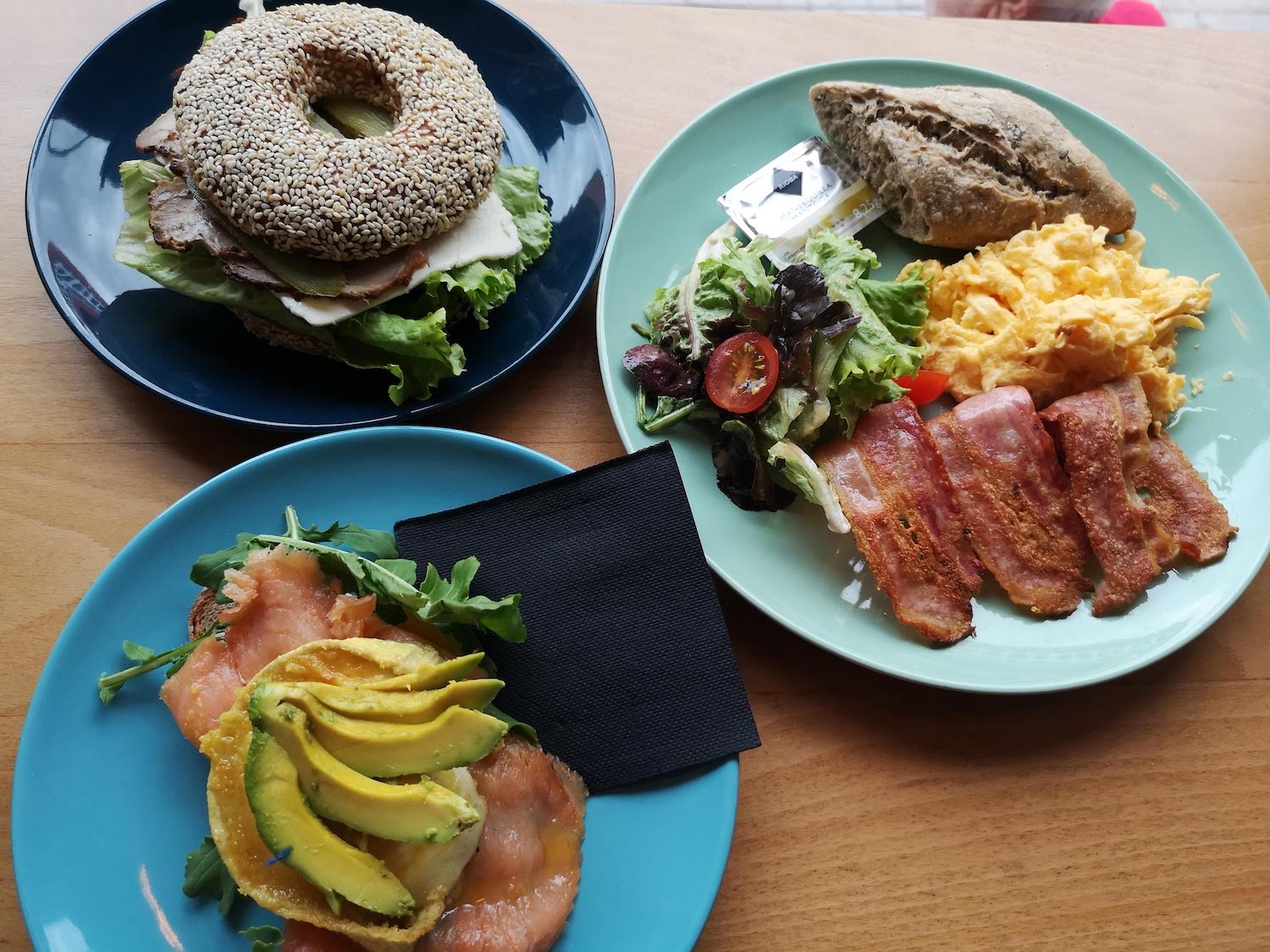
Los Cristianos
From the south, we made our way up to the west to explore the island. First stop was at Los Cristianos. This is the place where people stay for vacation. With nice black sand beach “Playa de Los Cristianos” and great restaurants around.
Continuing further up we come to Playa de las Americas. Another well-known beach by the public and cool areas to chill and hangout.
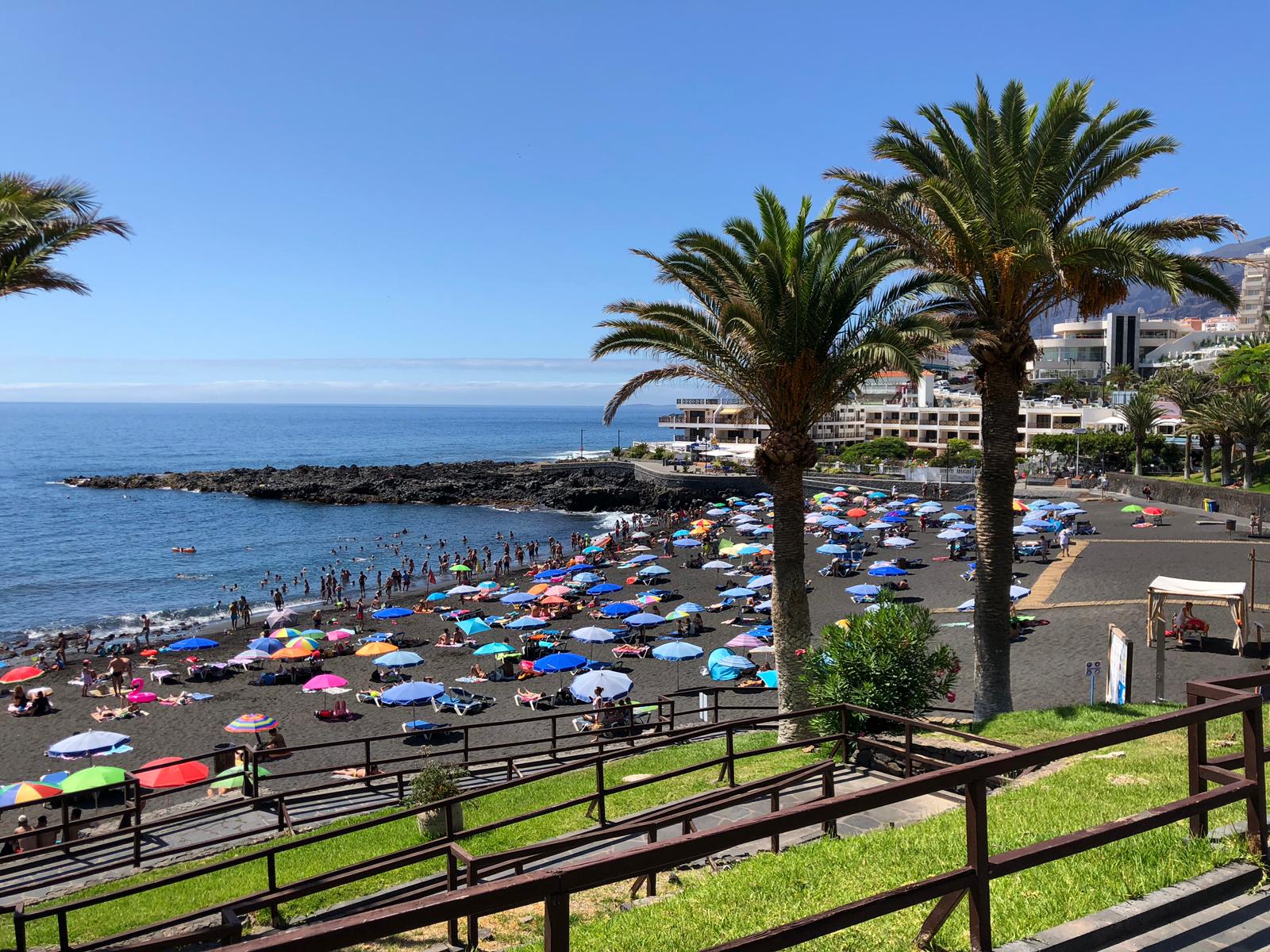
Los Gigantes
Is on the west coast, maybe the second most touristic place after Los Cristianos. The beach is sheltered by the gigantic rock formation where the name of this town comes from “the giants”
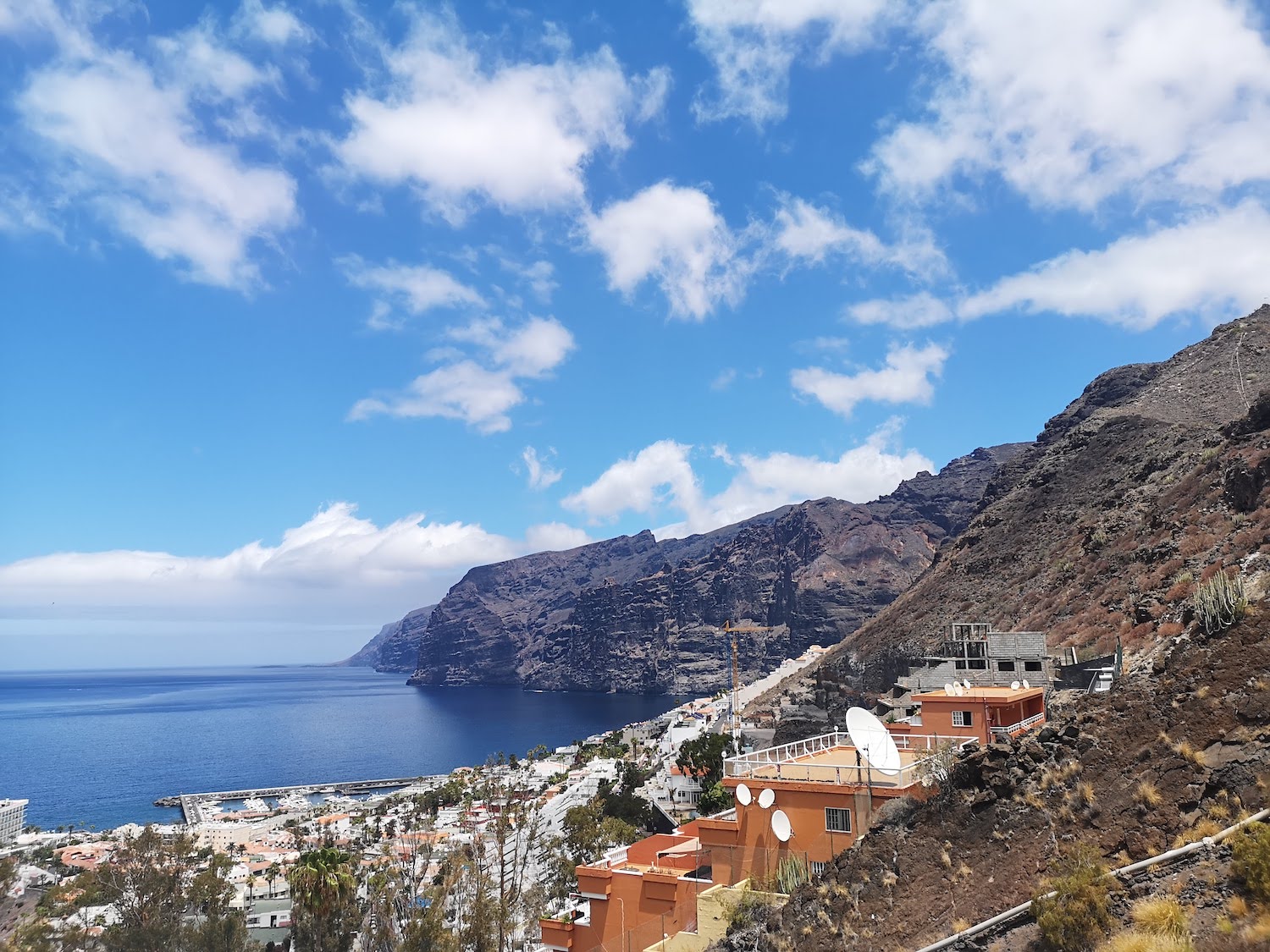
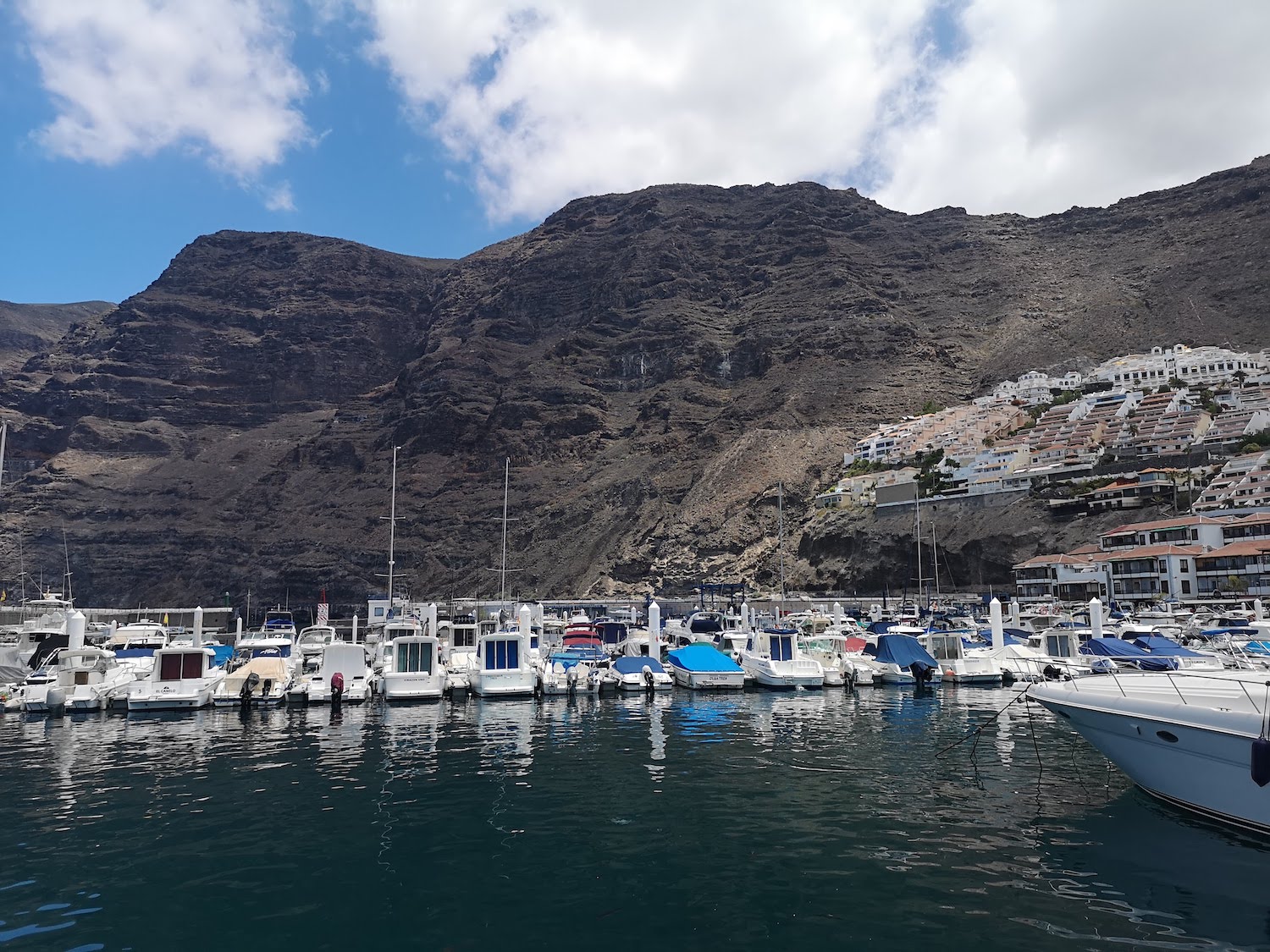
El Bujero
You can try some of the several hikes starting from “Tamaimo”. Like the one which we wanted to do called “El Bujero” which is 3.5 to 4 hours hike up and down. El Bujero is an opening in the mountain that opens up to Los Gigantes. It looks like this (see photo below by my friend Carlos Orenes)
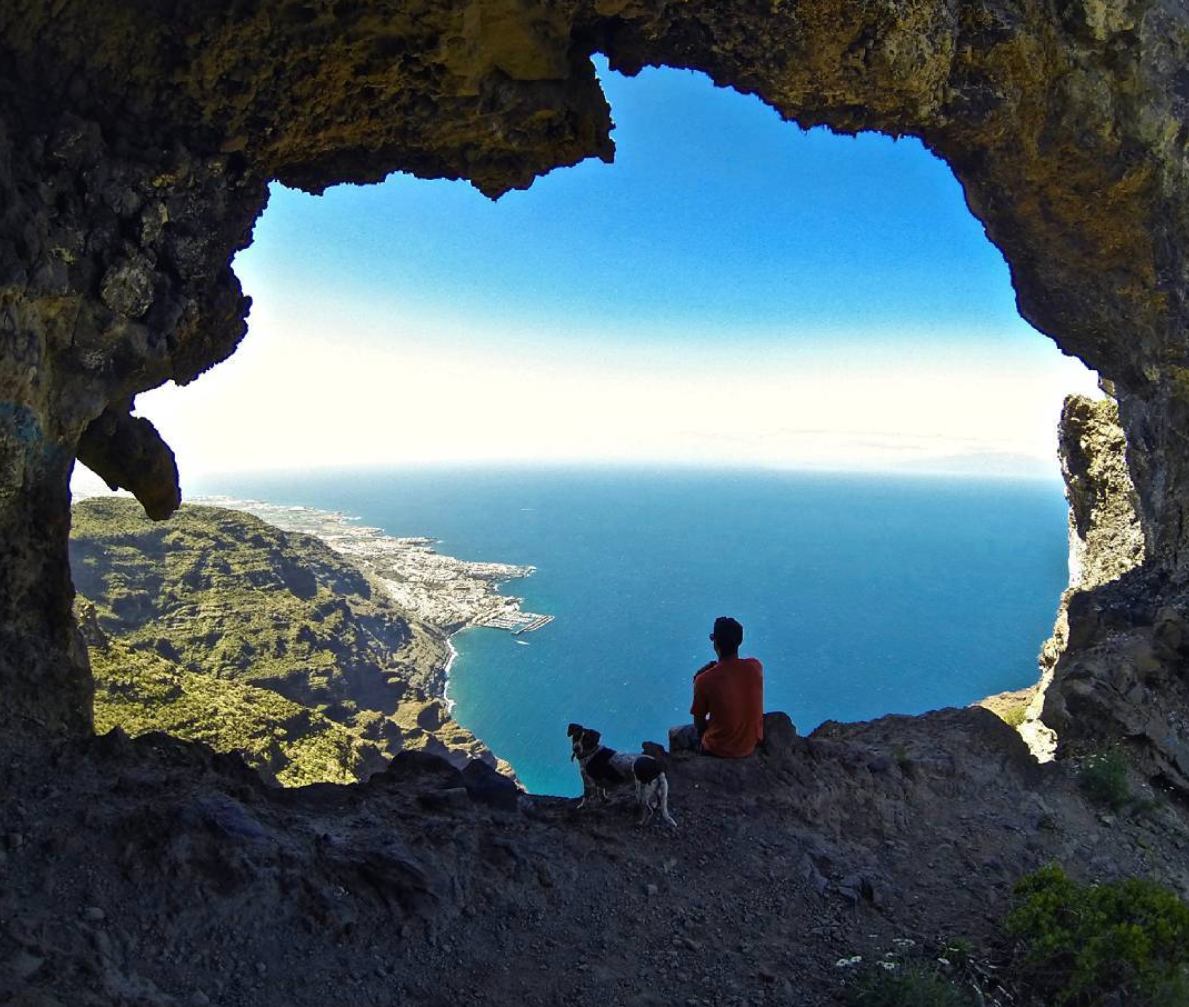
Before starting this hike, we were told that it is not an easy one, tricky and to be very careful not to get lost as there are several hiking routes leading to other spots. I used an app called “wikilock” for those who do not know, it is an app that shows hikes and trails done all around the world and it gives you the exact route done already by other people.
We were set to go to this amazing spot, El Bujero. Everything went fine, as we were already very close to the end but we had the most unfavourable weather conditions to do it once on top. Gigantic clouds were surrounding us and the further we walked, the more we were getting into this massive clouds, the harder it became, we could not see further than 3-4 meters ahead of us.
We were persistently continuing but then we realized we were off track. We must have missed a road somewhere. What to do? During all our way up we did not meet any other hikers. Sadly, we decided to go back and do another path to the “Cruz de Los Missioneros” instead which was on our way back to Tamaimo.
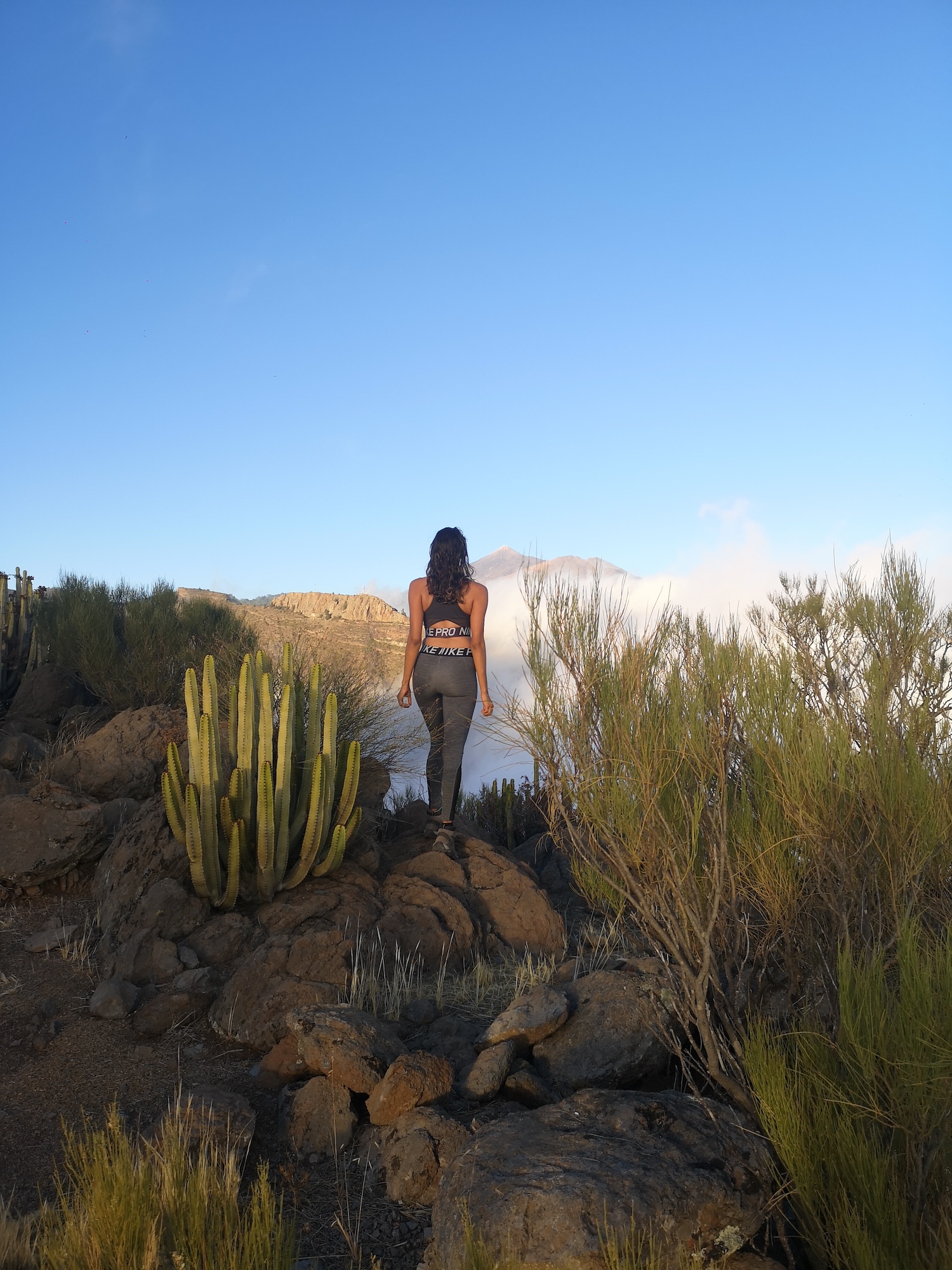
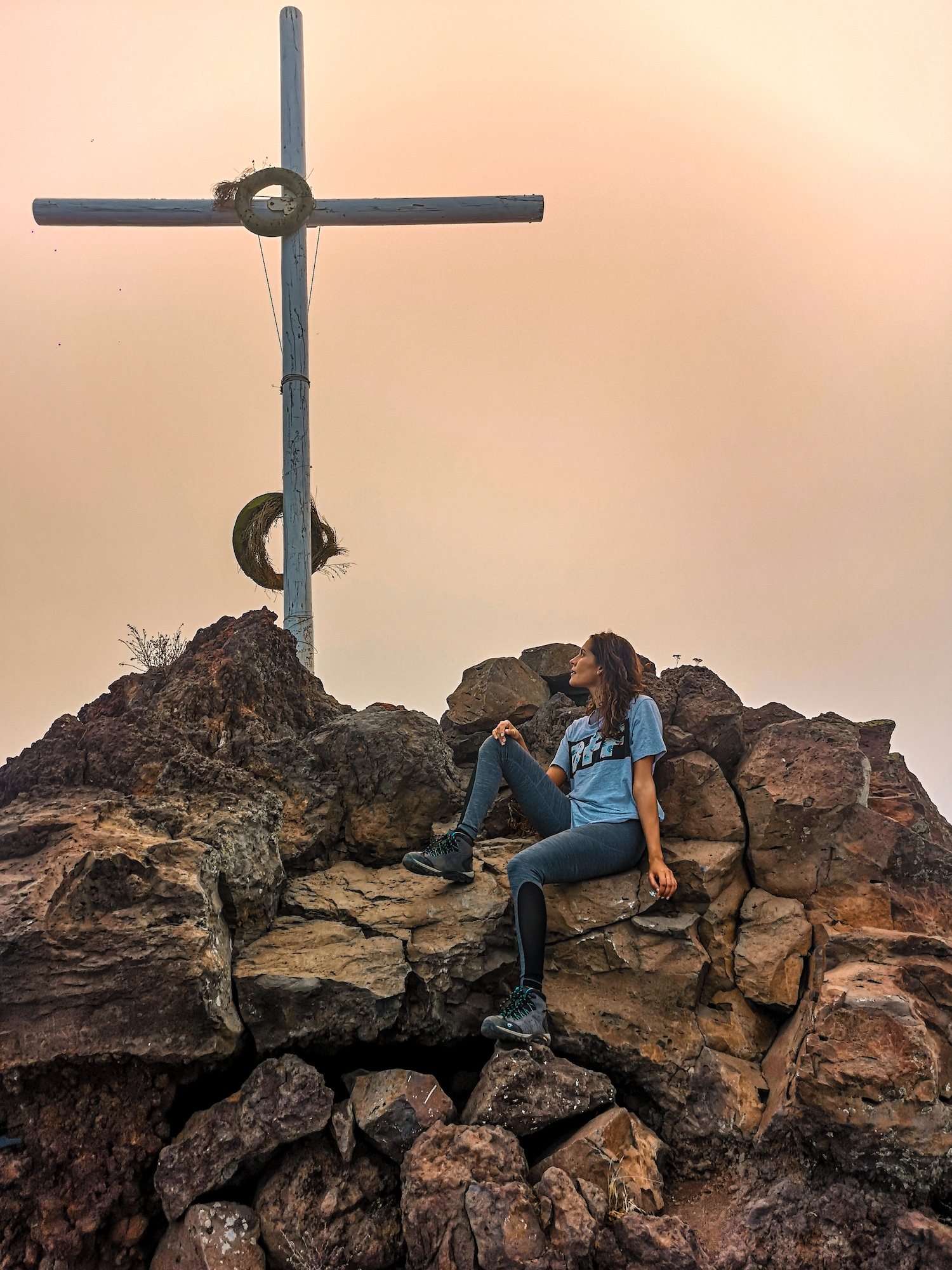
Masca Valley
Masca is a small mountain village with less than 100 inhabitants with an incredible landscape view. Masca can either be accessed by car or by taking the trail route. Either way, it is worth the detour. The trail from the village down the gorge to the beach on the Atlantic ocean is popular, though strenuous, hiking route, which takes about 3 hours each way. Once you´ve reached the beach, you can decide whether to take a boat back to Los Gigantes or hike back up the trail. Hiking back up would be quite difficult. If you take the boat to Los Gigantes, you can take a taxi cab back to Masca.
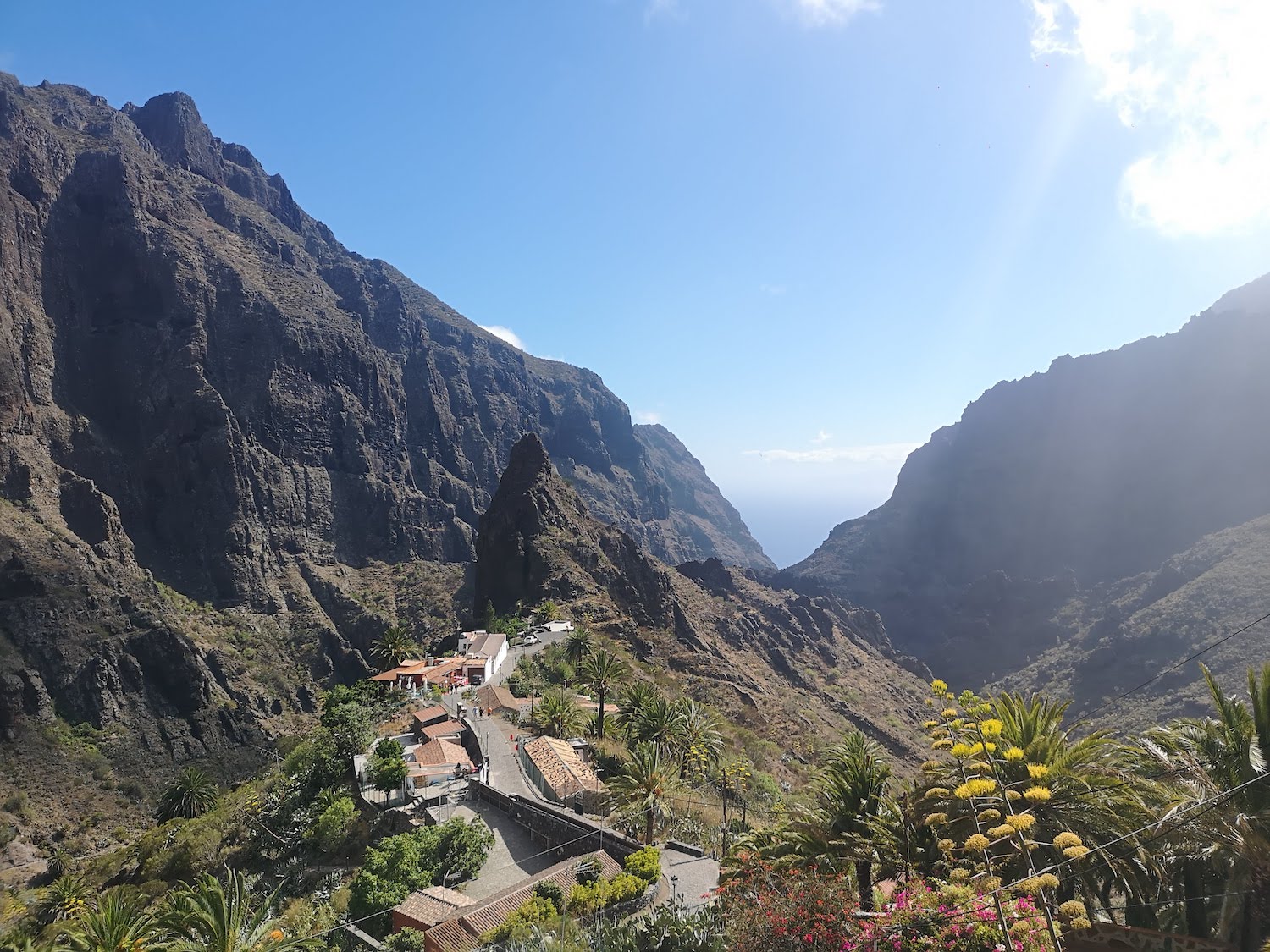
Best sunset spots.
If like me you like to end the day with a beautiful spot and watch the sun go down, then you must absolutely go to these two places.
- Rambla de Castro – The ruins of Rambla de Castro is a great romantic place to watch the perfect ending of a beautiful day.
- Punta de Teno Lighthouse – Watch the sun go down of the lighthouse of Punta de Teno.
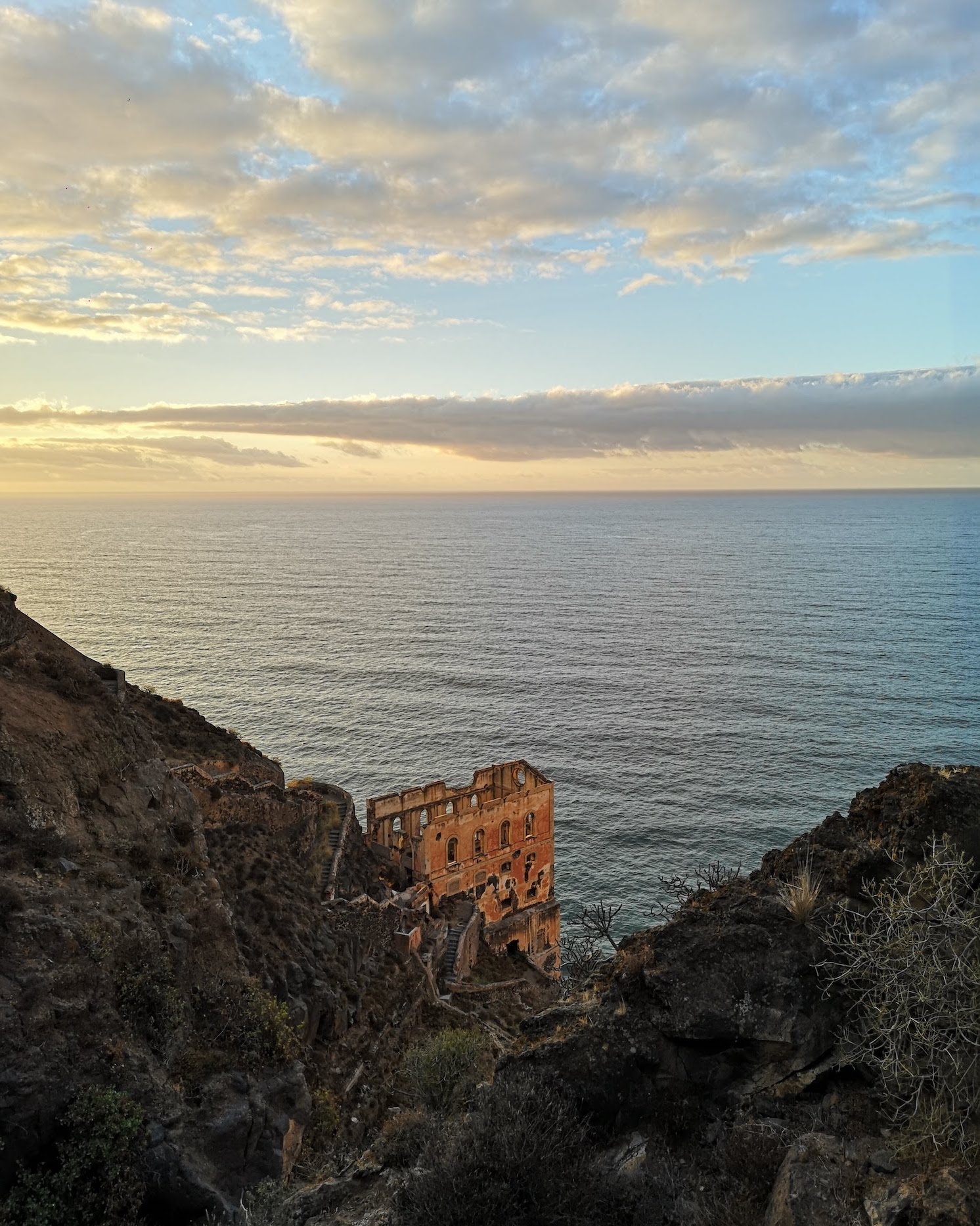
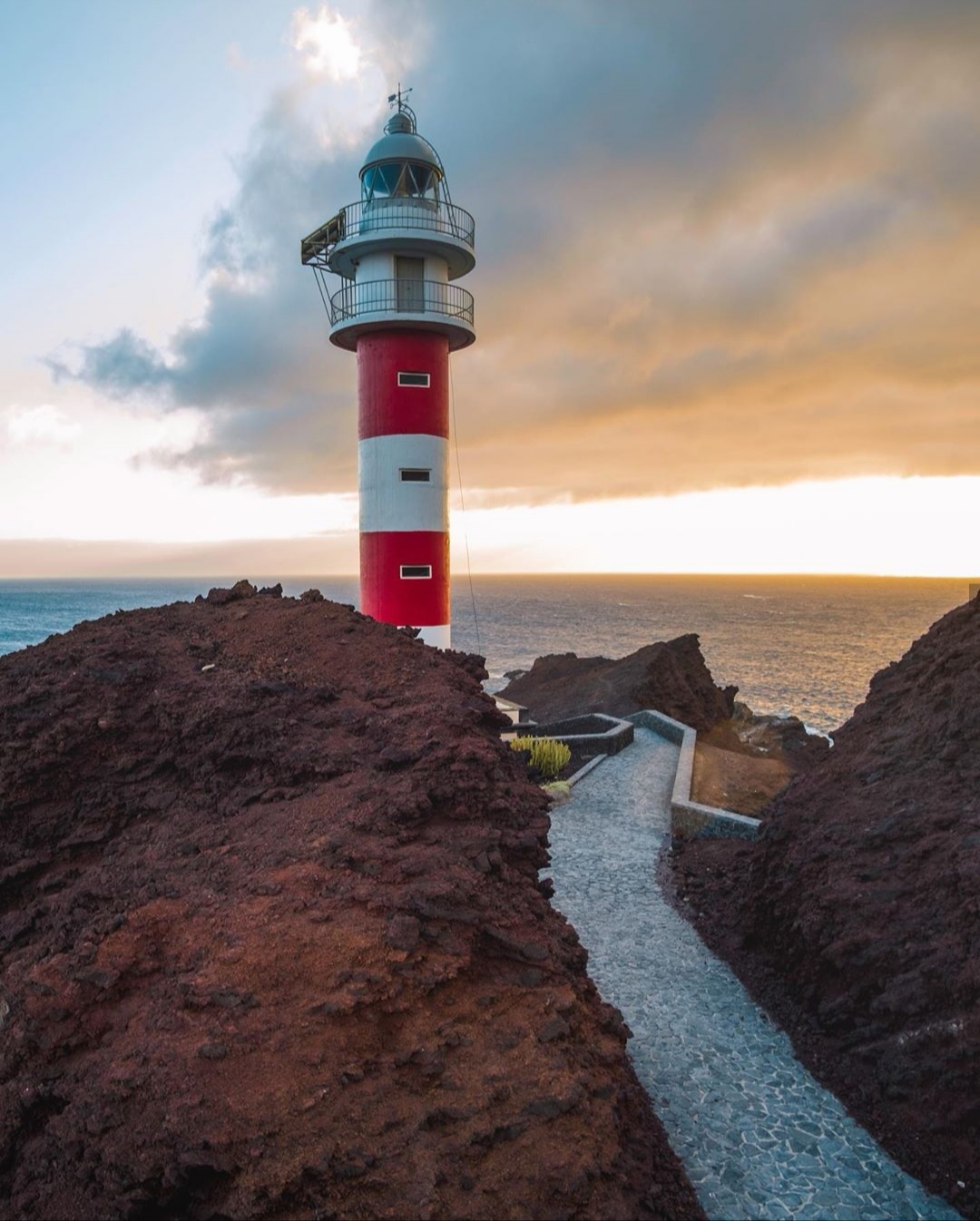
Playa de Benijo
Benijo has got to be one of my favorite beaches in Tenerife. Like most of the beautiful and quiet beaches on the Canary Islands, they have to be earned. What I mean to say by this is that either you need to take stairs to reach the beaches or to walk a couple of minutes. Either way, it is totally worth the effort once you made it down there.
One of them is Benijo beach, a black soft sand beach.
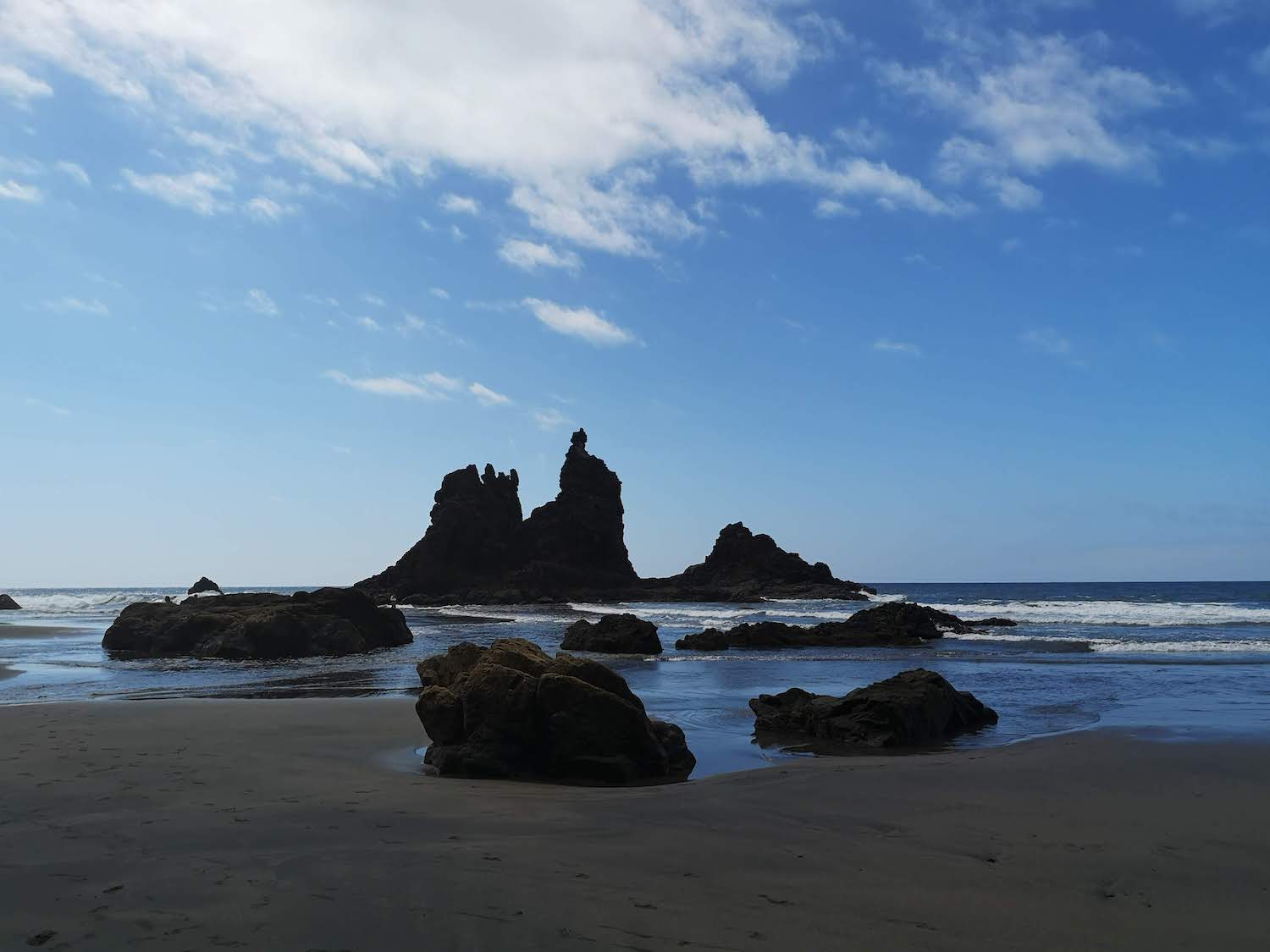
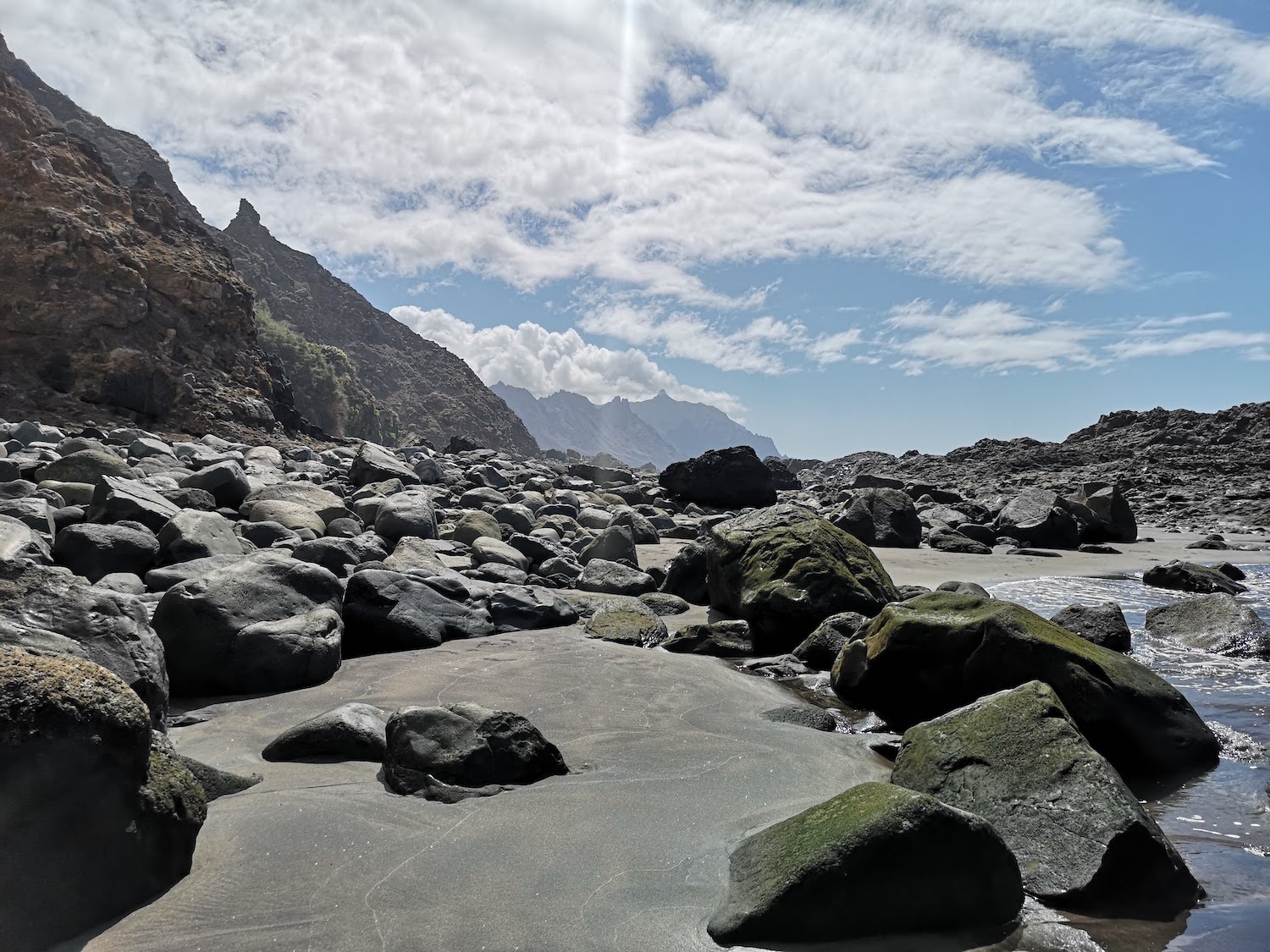
Guachinche
The Guachinche is a typical establishment where local wine and typical food are served. They are more common on Tenerife than the other Canary Islands.
So, if you are in Tenerife, do not forget to try a Guachinche.
My two good addresses would be:
Guachinche El Cubano in Santa Cruz de Tenerife
Casa Paca in Benijo
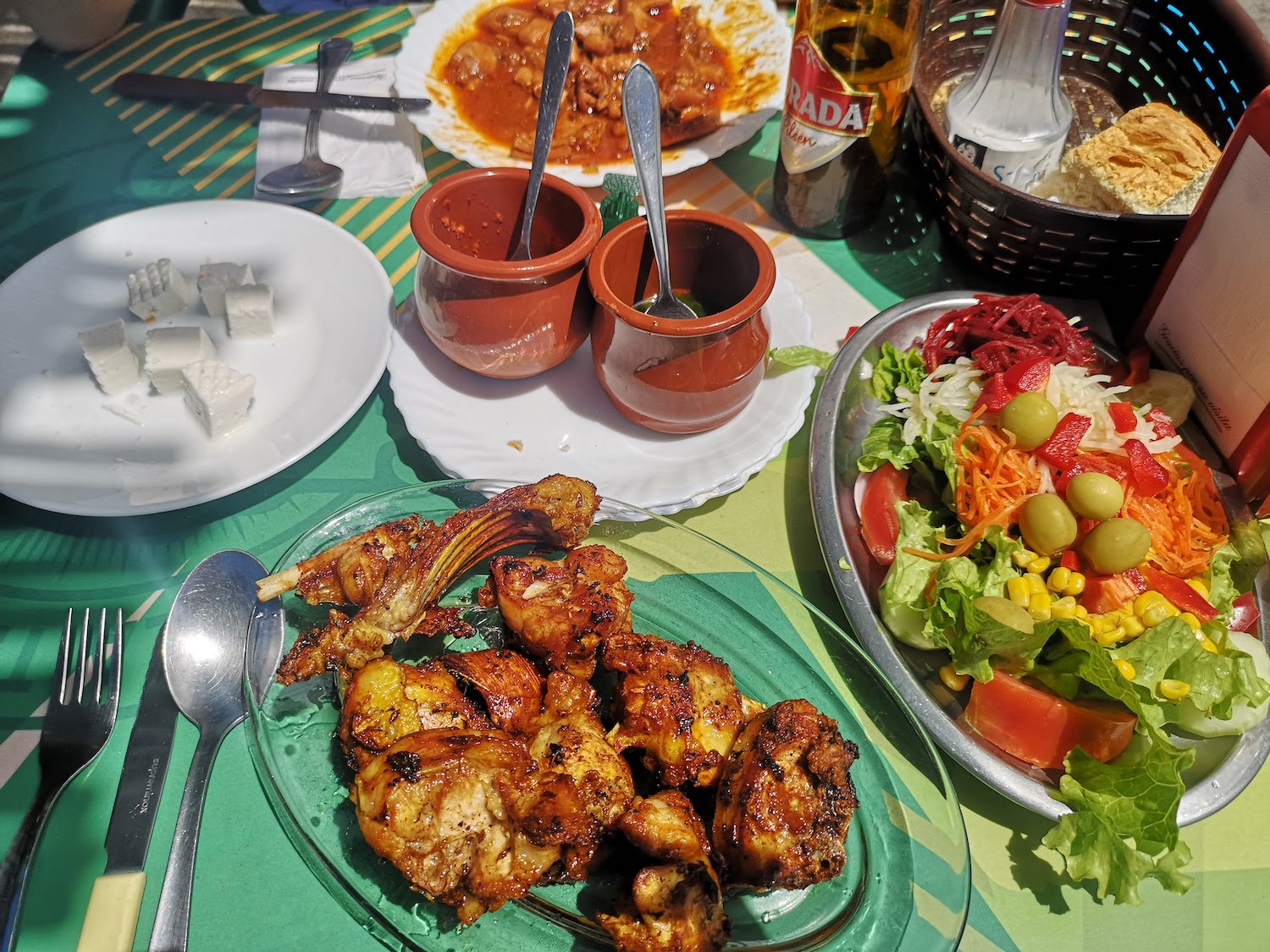
Playa de las Teresitas
Is my first choice for a beach and having a good time. This white sandy beach is big enough for all those who want to have a good time.
And if you want to have a proper view of how big this beach is, then take the car and go to the viewpoint. (see photo below)
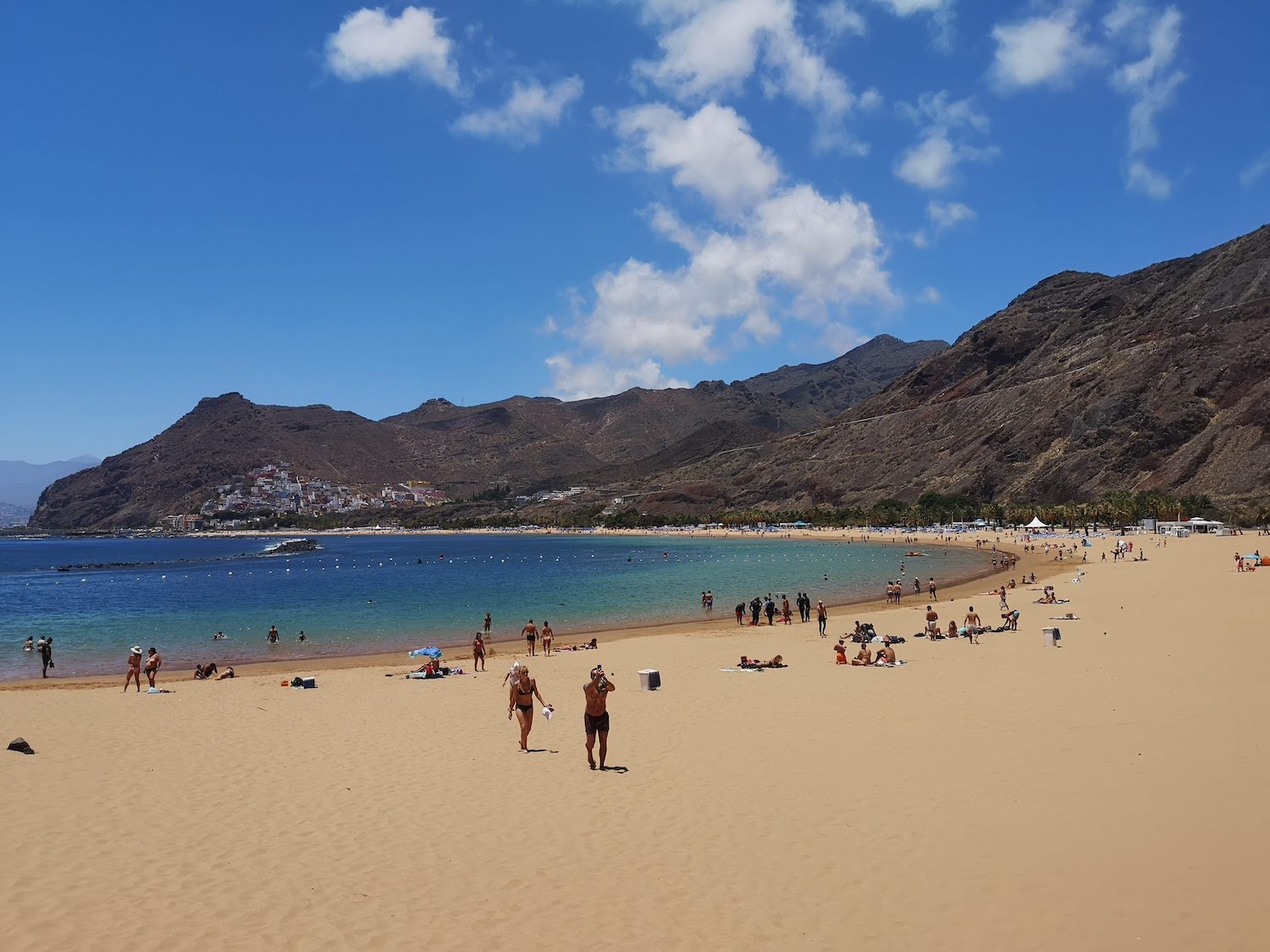
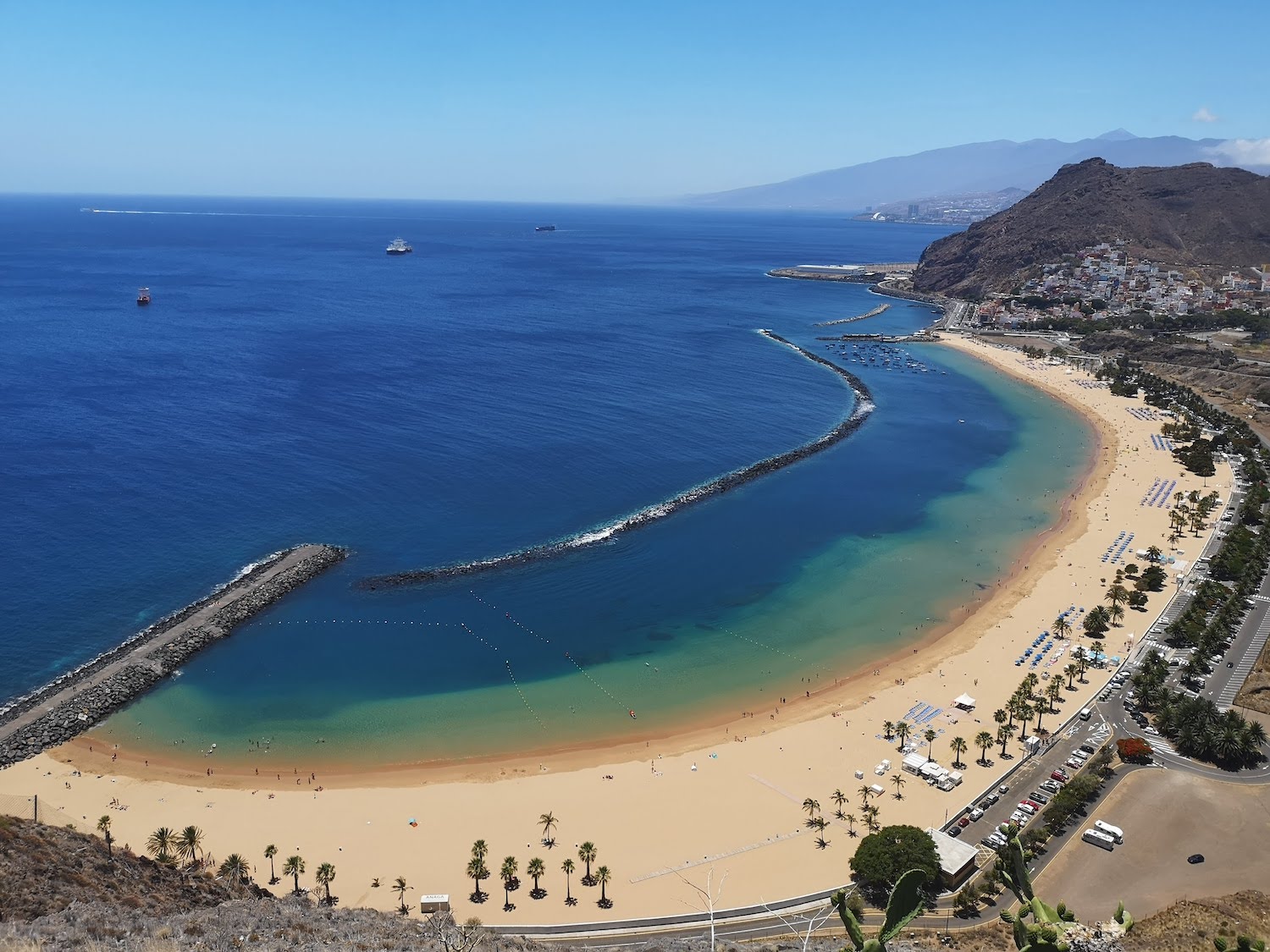
El Teide National Park
Teide National Park on Tenerife is the main of Spain’s Canary Islands. Mount Teide, a towering volcano and the highest peak in Spain. Trails and the Teide Cable Car lead to the summit. To the west, Pico Viejo has crater views.
You can always be sure to have a good view on the top with its 3.718 meters you will be above the clouds.
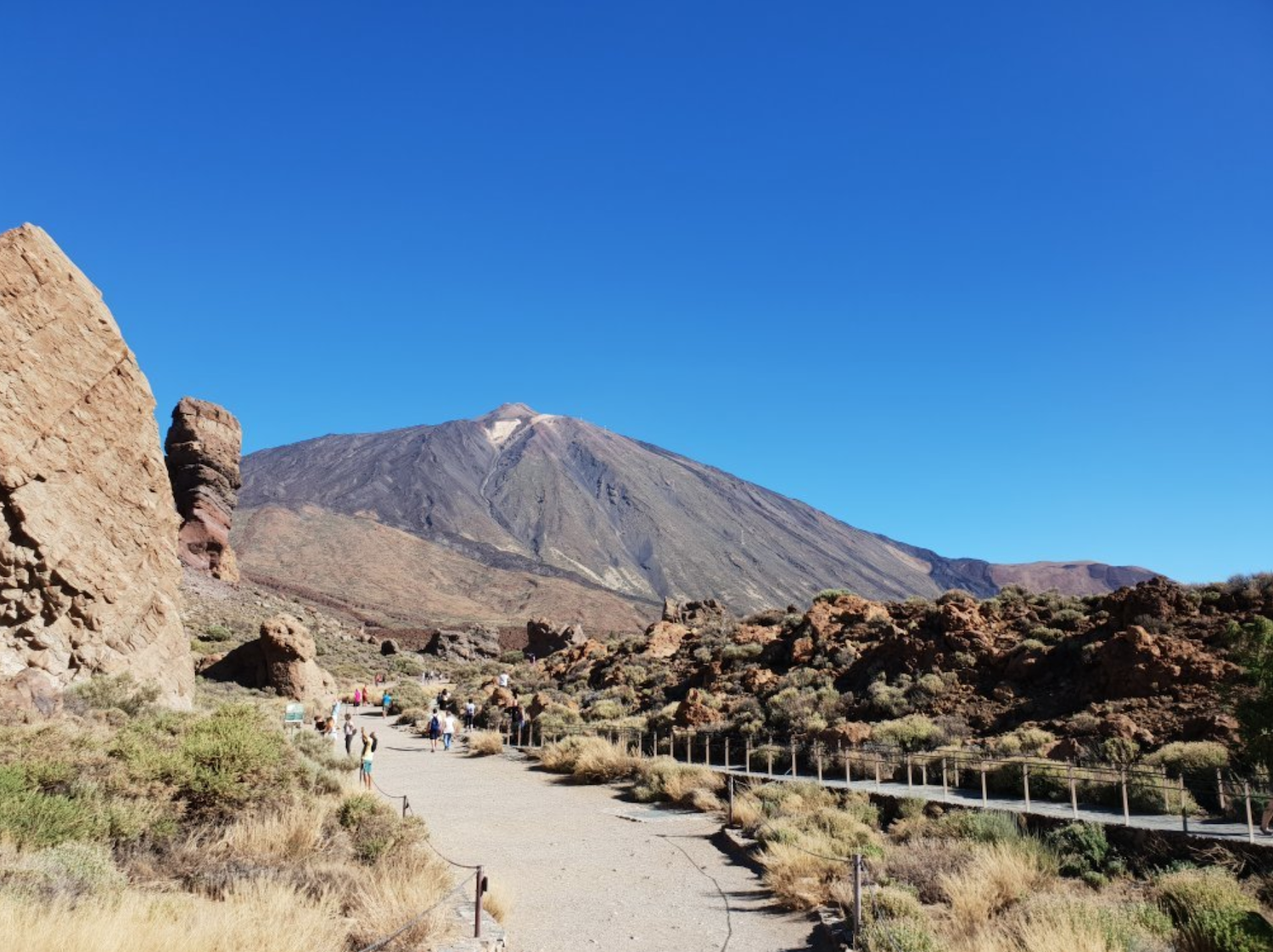

Paisaje Lunar
The Paisaje Lunar is a white lunar landscape found close to Vilaflor. This is another great hike to add to the list while in Tenerife. The hike is about 4 hours in a pine tree forest till the top. The way up and down is signposted so all you have to do is to enjoy the hike and the beautiful mountain views and the impressive lunar escape.
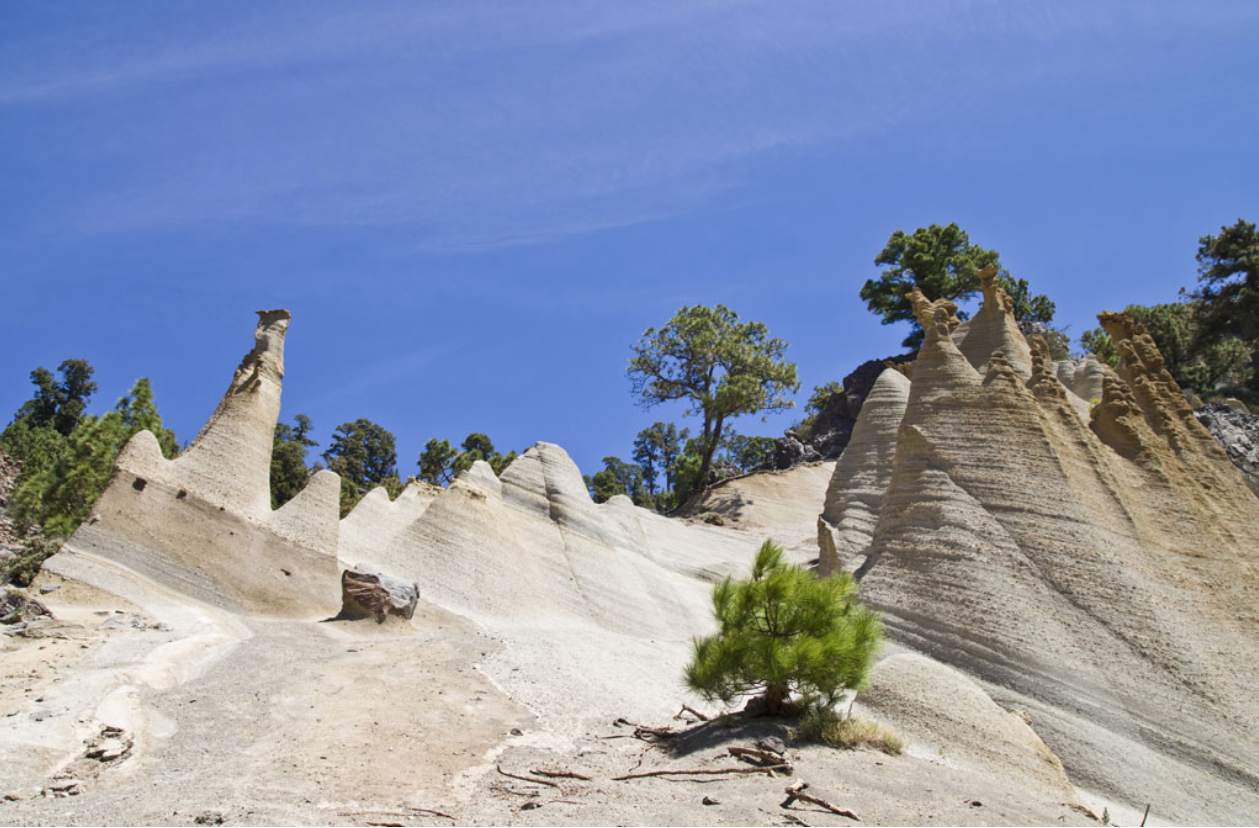
Loro Parque – Puerto de la Cruz
Loro Parque is the Spanish word for “Parrot Park”. This is how the park started, now it holds the largest and the most diverse parrot species and subspecies in the world. Loro Parque over the years has become one of the most respected zoological institutions. It has other species of animals within the parc like dolphins, Orcas, penguins, gorillas, reptiles and other birds.
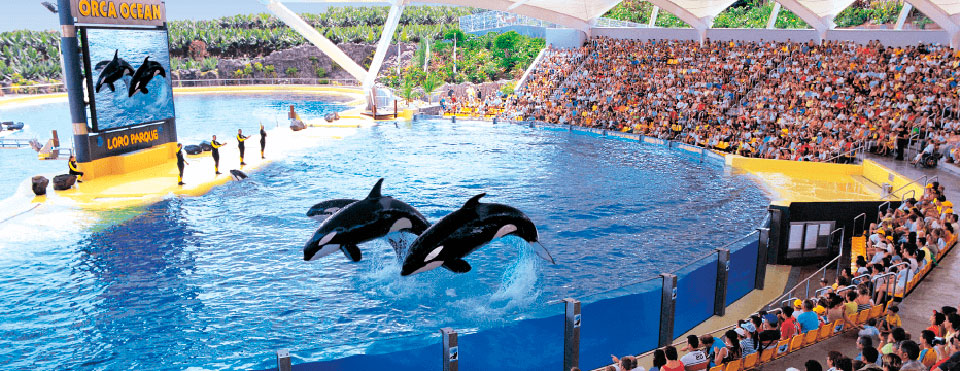
Siam Park, an aquatic Parc in Costa Adeje.
Siam Park claims to be the most spectacular water attraction in Europe. Siam Park is a perfect waterpark for the whole family. Lots of slides suited for all ages, lazy river, the wave pool amongst other water attractions to have a total fun day with friends and family.

All over Tenerife, you have beautiful natural caves for the adventurous to go explore and dive.
GRAN CANARIA ISLAND
The second island on our list was Gran Canaria, most probably the most visited one of the archipelagos. We reached the island with a ferry (Fred Olsen) from the port of Santa Cruz to Agaete port in Gran Canaria. The ferry trip is about an hour and a half long.
https://www.fredolsencruises.com/destination/canary-islands
Gran Canaria has several very beautiful small towns to visits like Agaete, Galdar, Firgas, and Terror among others. Great to have a stroll in these beautiful towns full of colors and to try out local food.
Firgas
Let’s start with the most visited spot in Firgas, the “Passeo de Canarias”. It is like a waterfall running down the stairs and on its right-hand side are the benches of each of the provinces in Gran Canaria. Further up the stairs is the reproduction of each of the Canary Islands with its own island specification embossed.
Firgas can be done on foot and this in a couple of minutes.
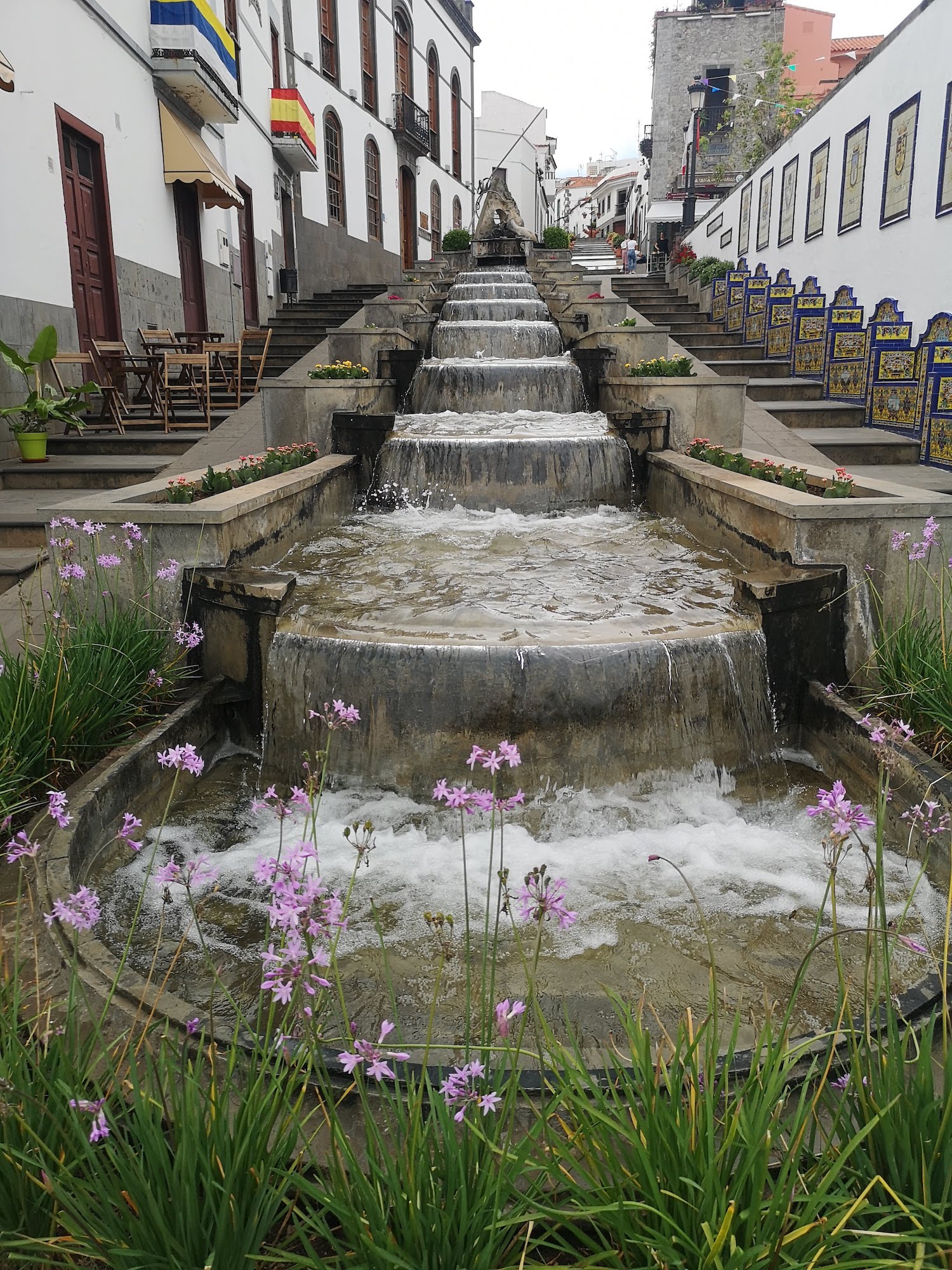
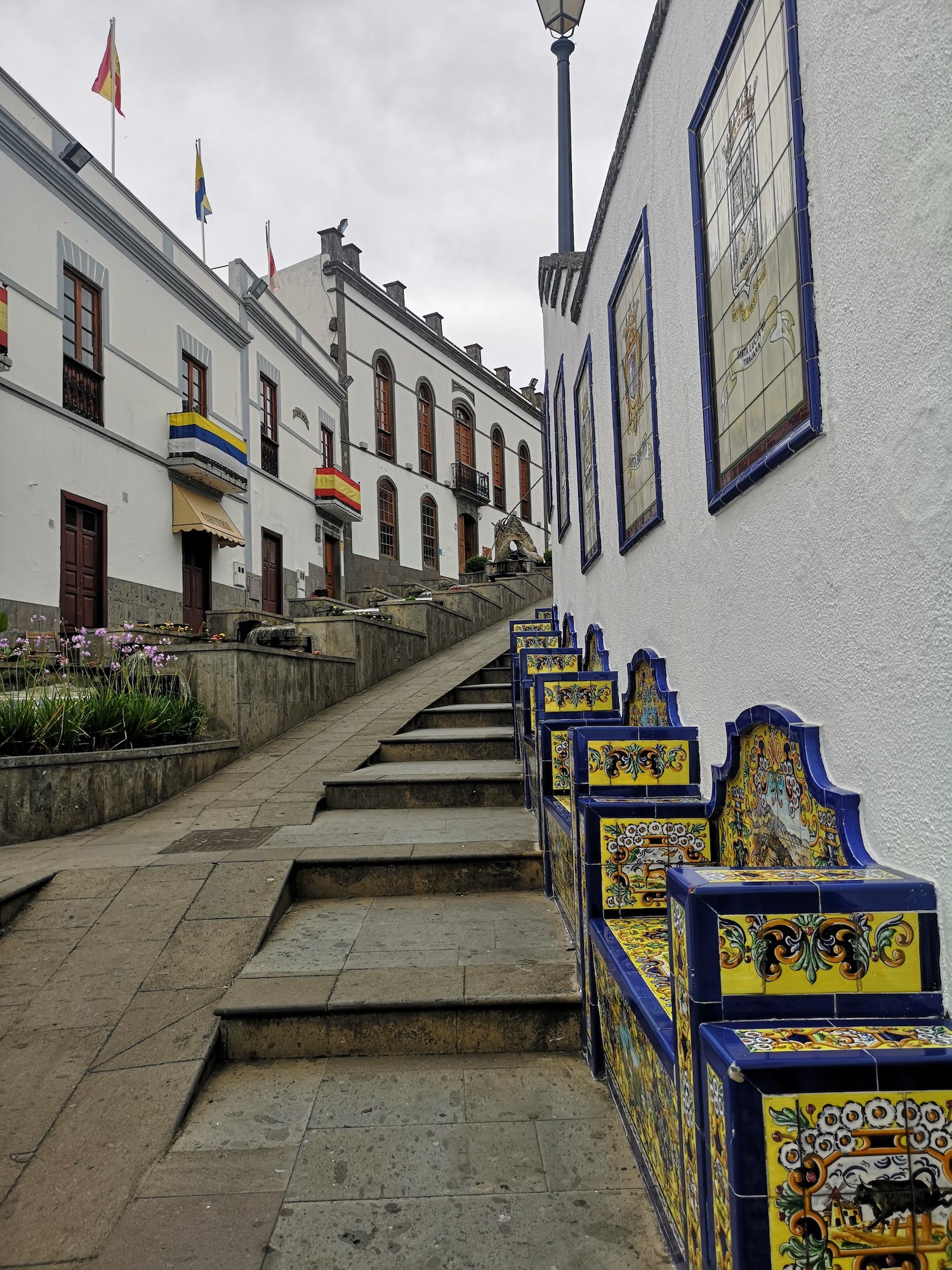
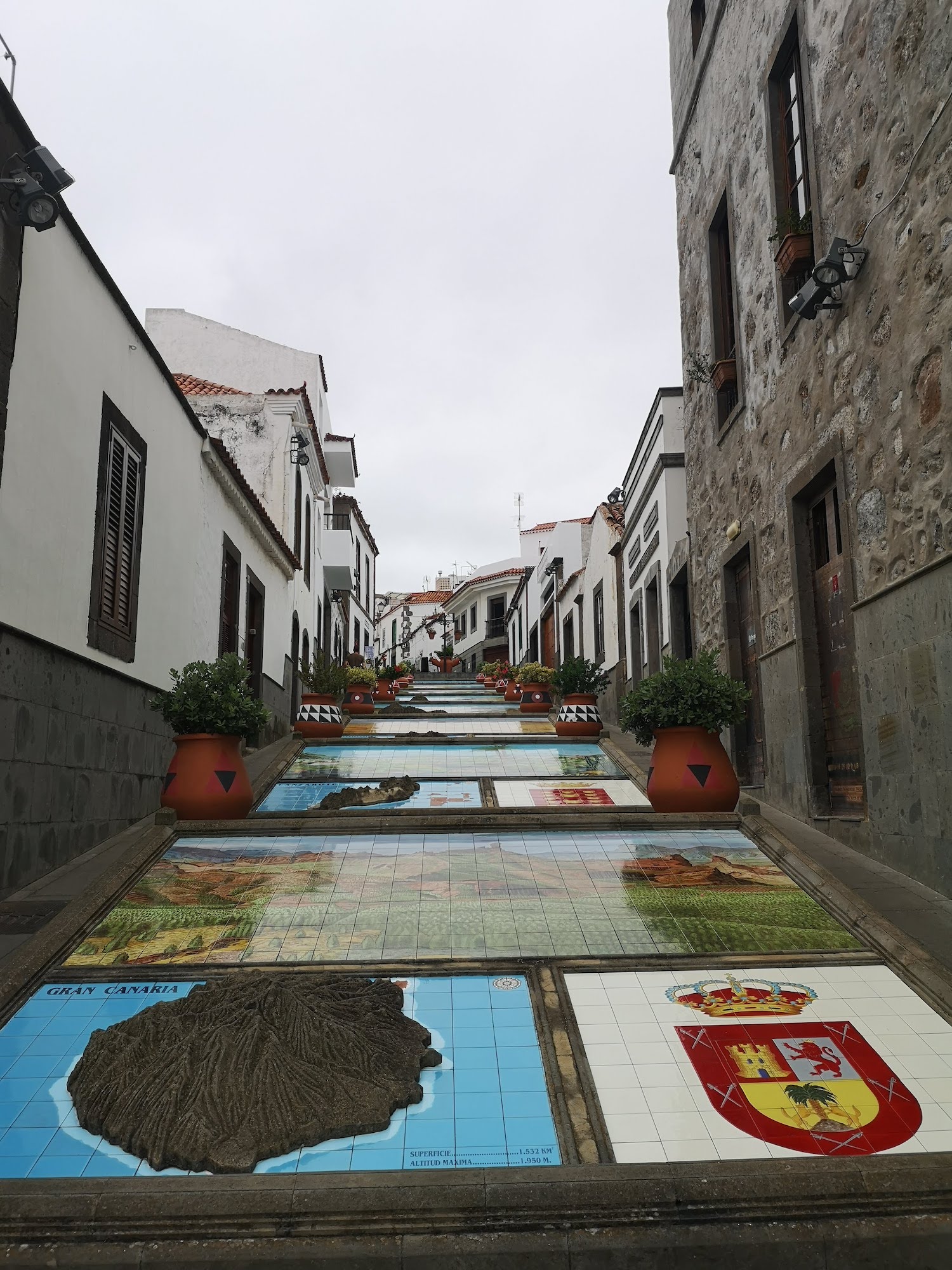
Galdar
Galdar has a lot of history and points of interest. Right in the centre of the town is an archaeological park, the Cueva Pintada, which shows the history of the island before the Spanish conquest. Once again, all these towns are better to be discovered on foot. Have a tapas break at any of the restaurants near La Plaza de Santiago. It has an awesome view.
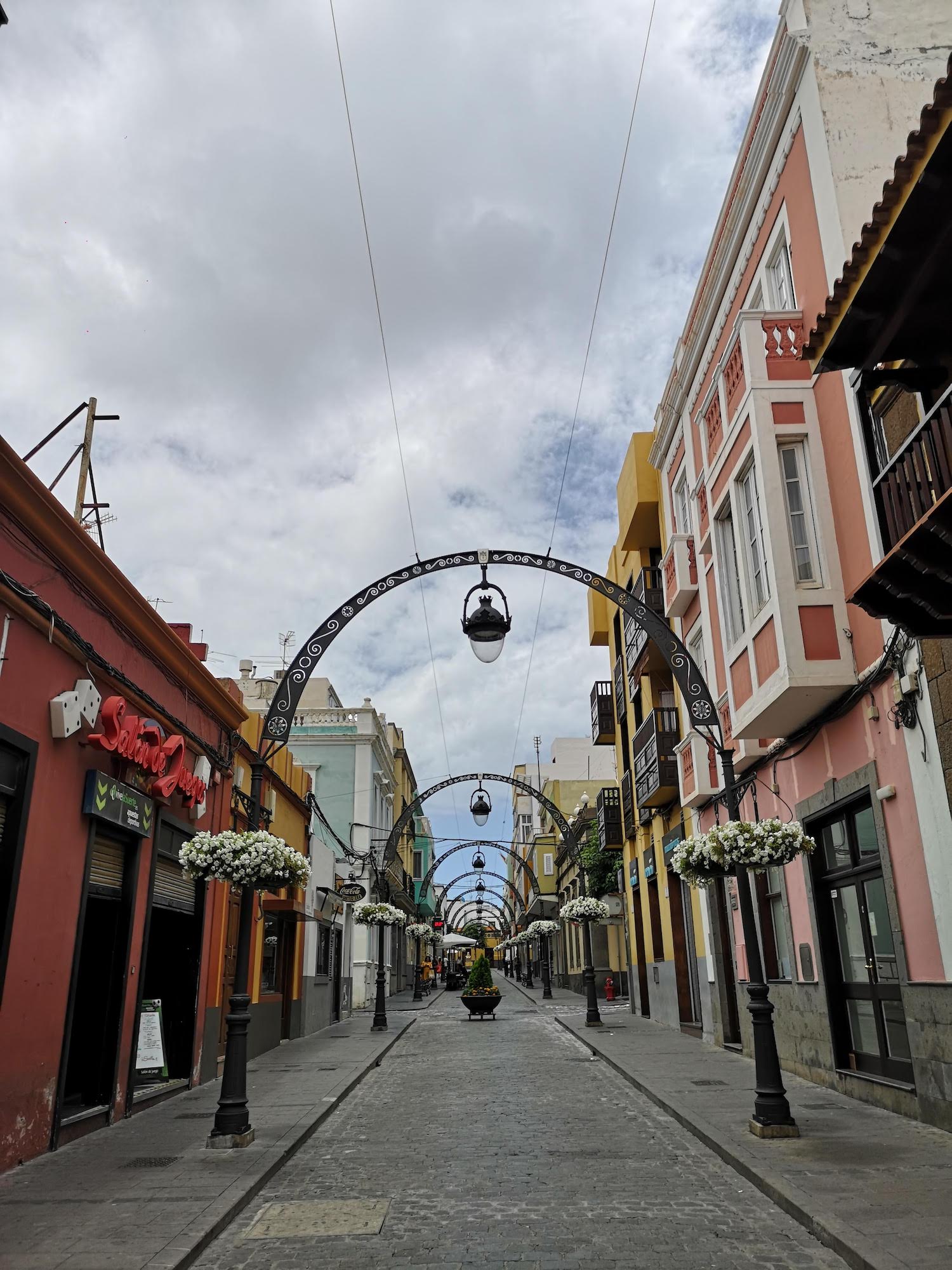
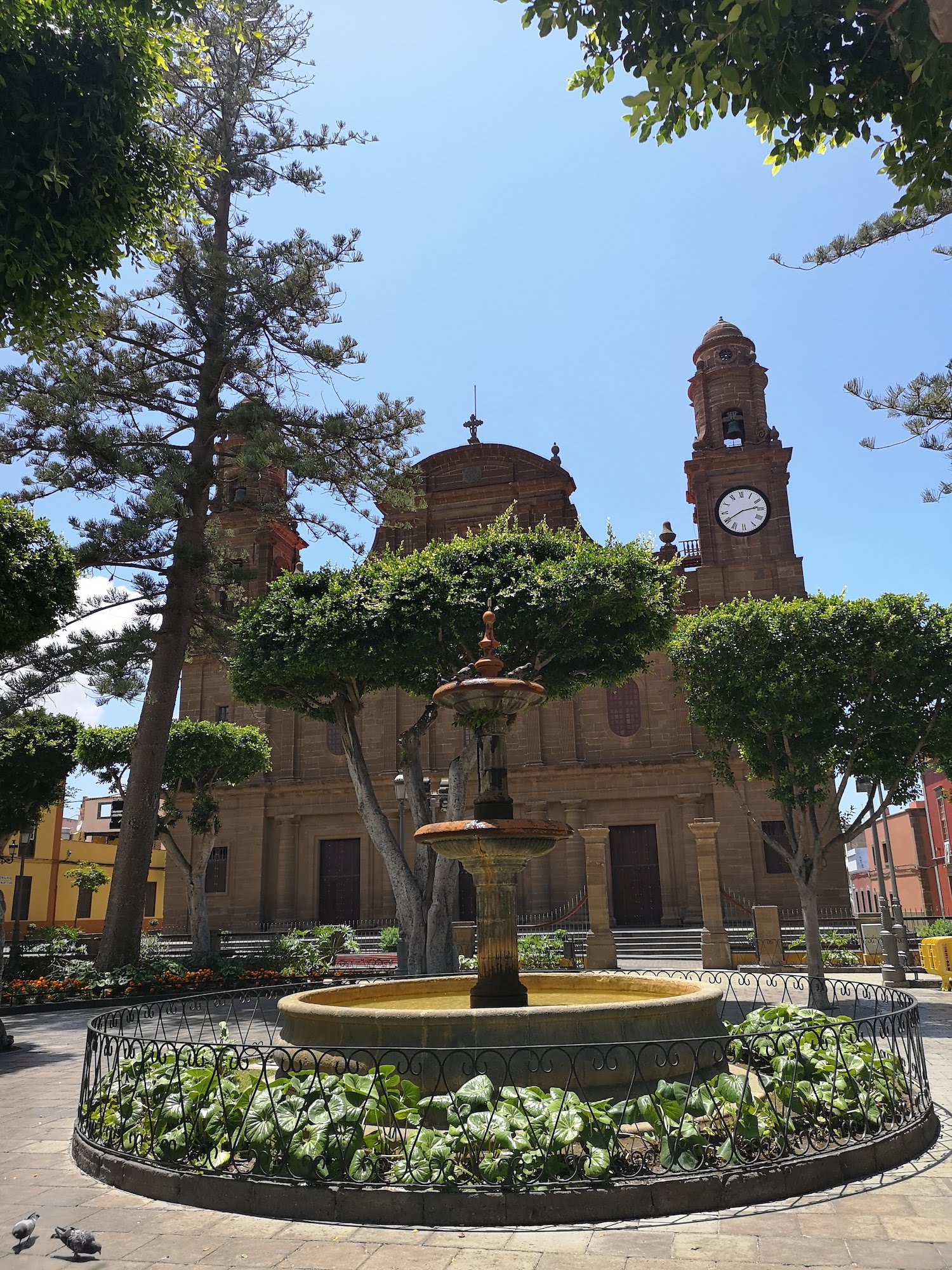
Arucas
Another small but cute town to visit. Narrow streets with colourful buildings on both sides of the traditional Canarian house make it very lively. Arucas main attraction is the architectural Parish Church of San Juan Bautista.

Puerto de Mogan
I must say that I really like this place, a beautiful fishing harbour and the wonderful little maze of streets and great seafood restaurants, this is Gran Canaria version of Little Venice. There is also a small beach, Playa de Mogan with loads of tax-free shops for some great deals.
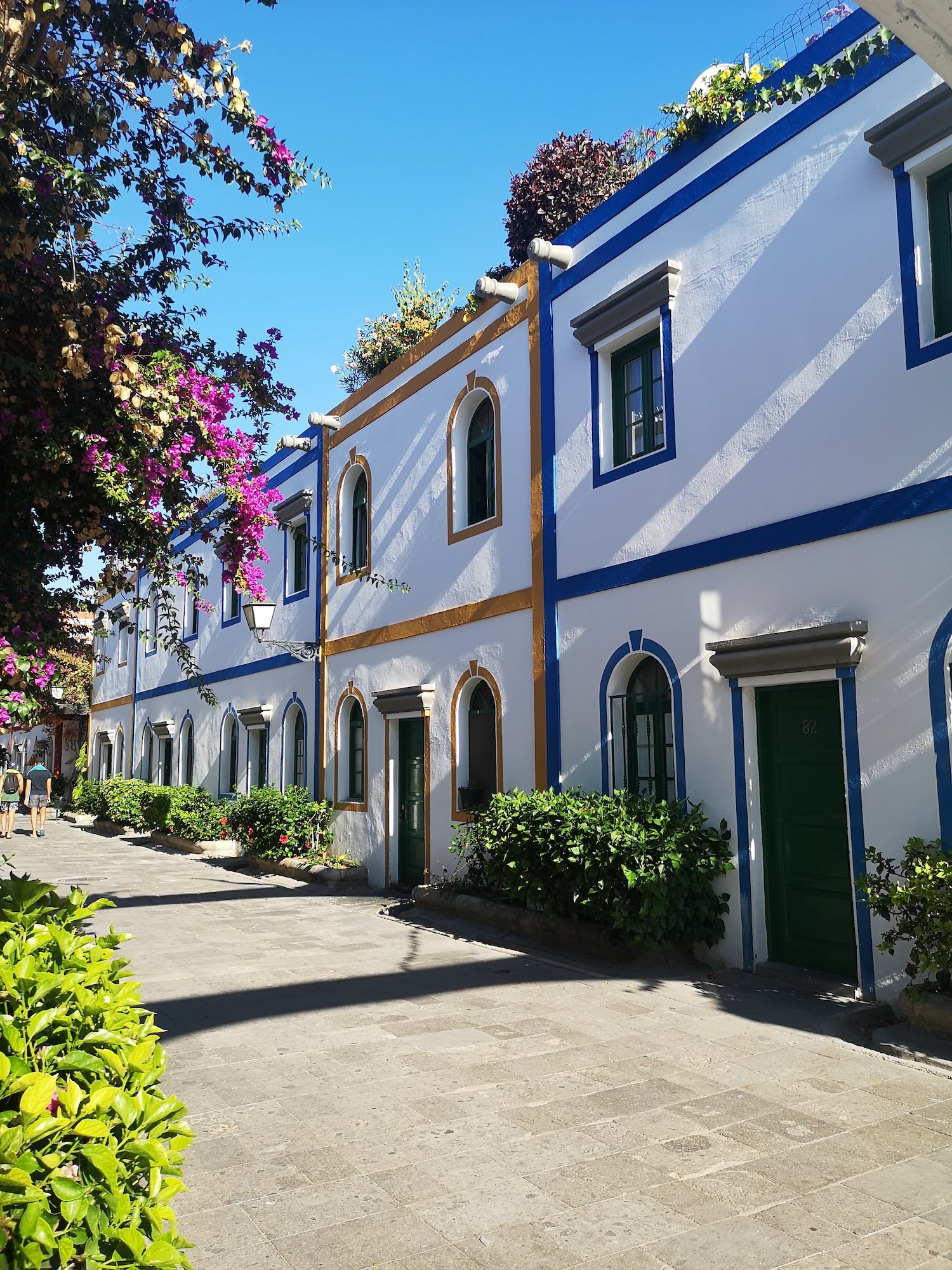


Las Palmas
Las Palmas is the capital of Gran Canaria. Once again, find a parking space and take a stroll in the city. Most beautiful places are accessible on foot.
Las Canteras Beach is the heart of the capital and from there you can walk to Alfredo Kraus auditorium, one of the city’s most emblematic views found right by the end of Las Canteras beach it is quite something spectacular auditorium for art and music. Designer shops and tax-free shops all over and beautiful plaza to hang out like in Vegueta.
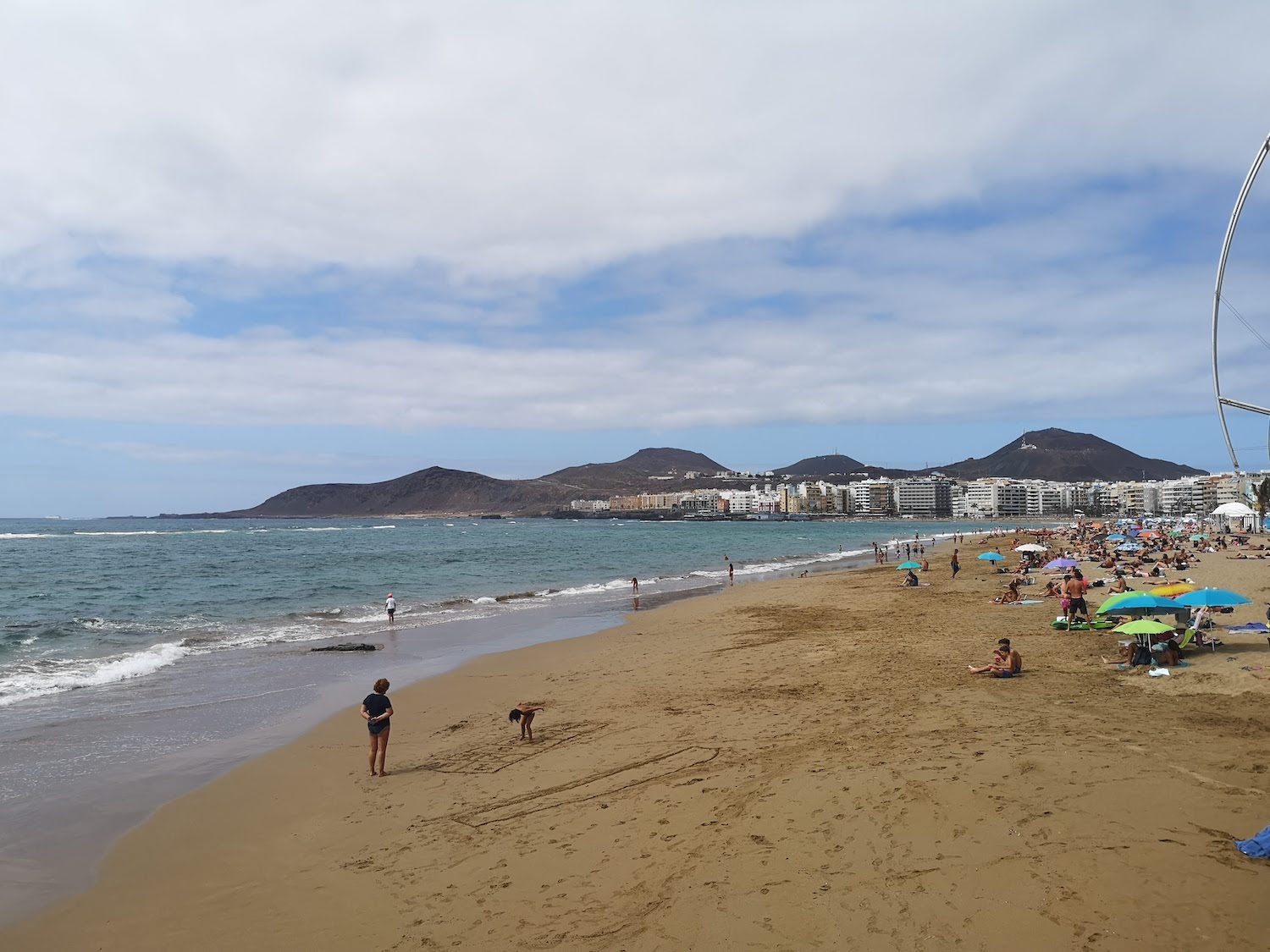
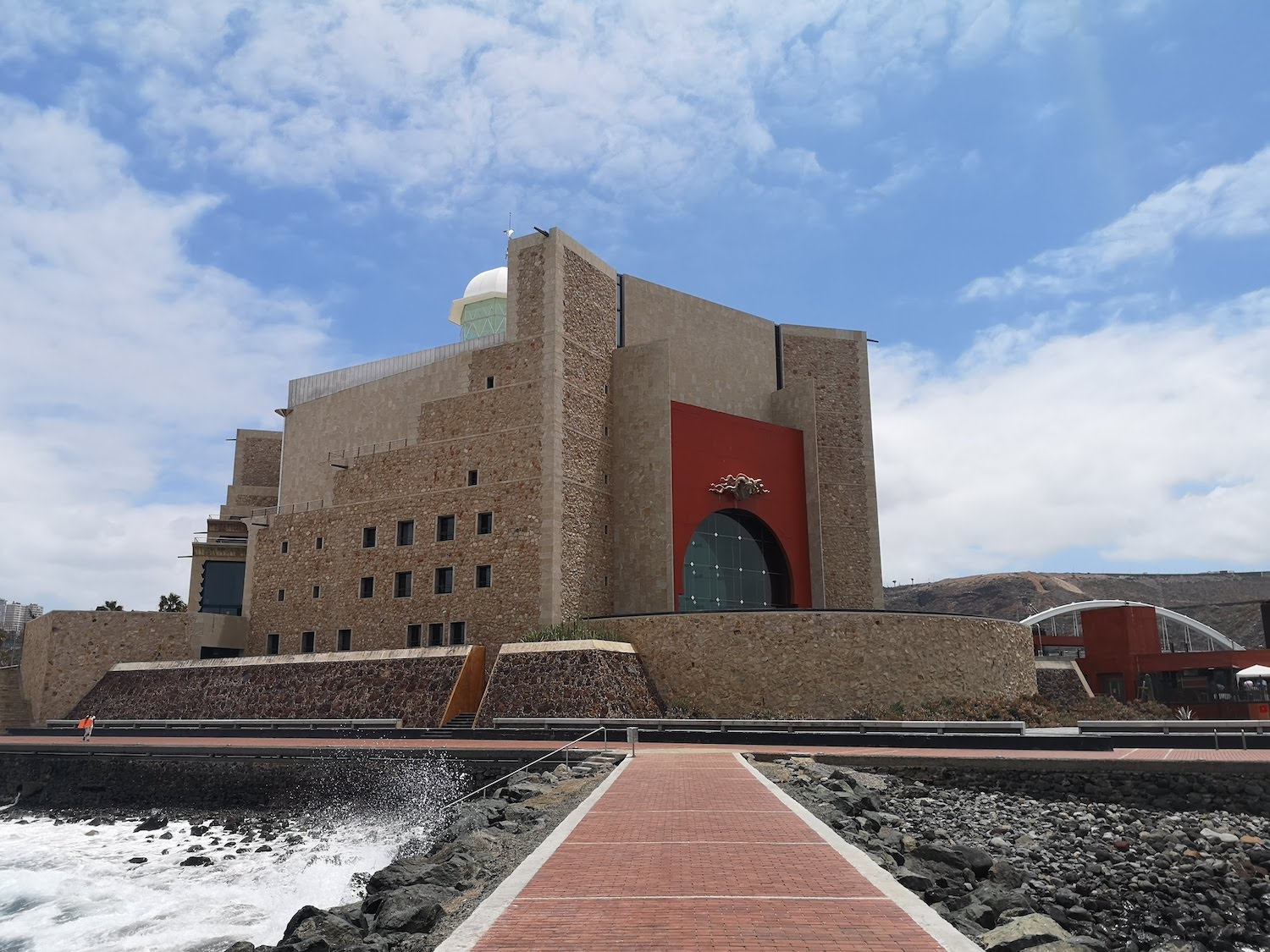
Tejeda
Our first two nights on Gran Canaria we spent in Tejeda, which was highly recommended by my two local friends there. We were not disappointed with their advice. Tejeda is the real heart of Gran Canaria, it is a must-see. Three things to absolutely do are: firstly, go to the Cruz de Tejeda. From there you could contemplate the most peaceful views of the island especially at sunset, it is just magical.
Second must see and do is to hike the el Roque Nublo, it is the symbol of Gran Canaria. The Roque Nublo is a natural monument of ancestral importance, an ancient place of worship for the aborigines. It was declared a protected natural space.
Last stop is to go to Pico de Las Nieves, the highest mountain of Gran Canaria. It can either be accessed by car or hiking, but totally worth a visit.
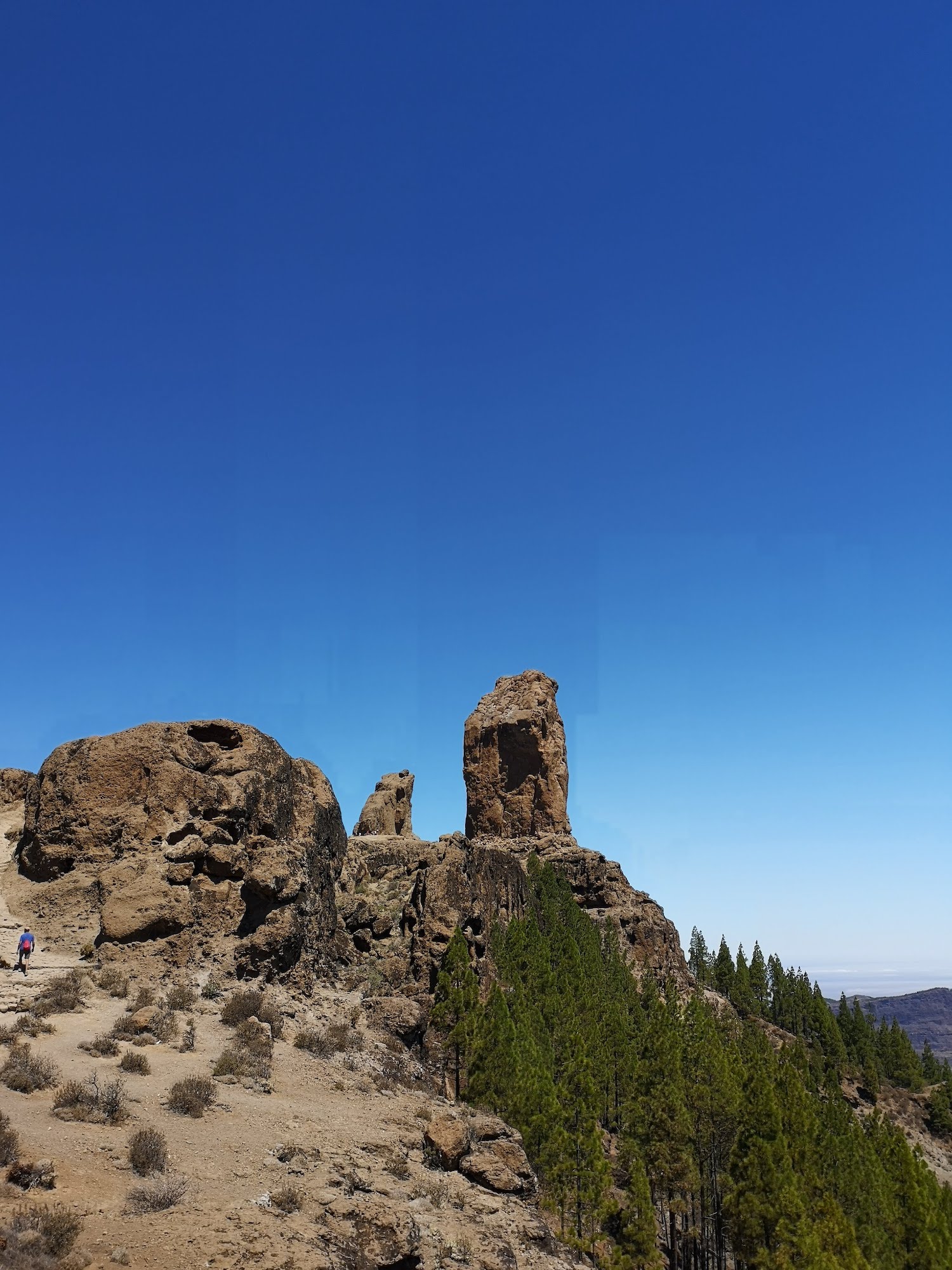
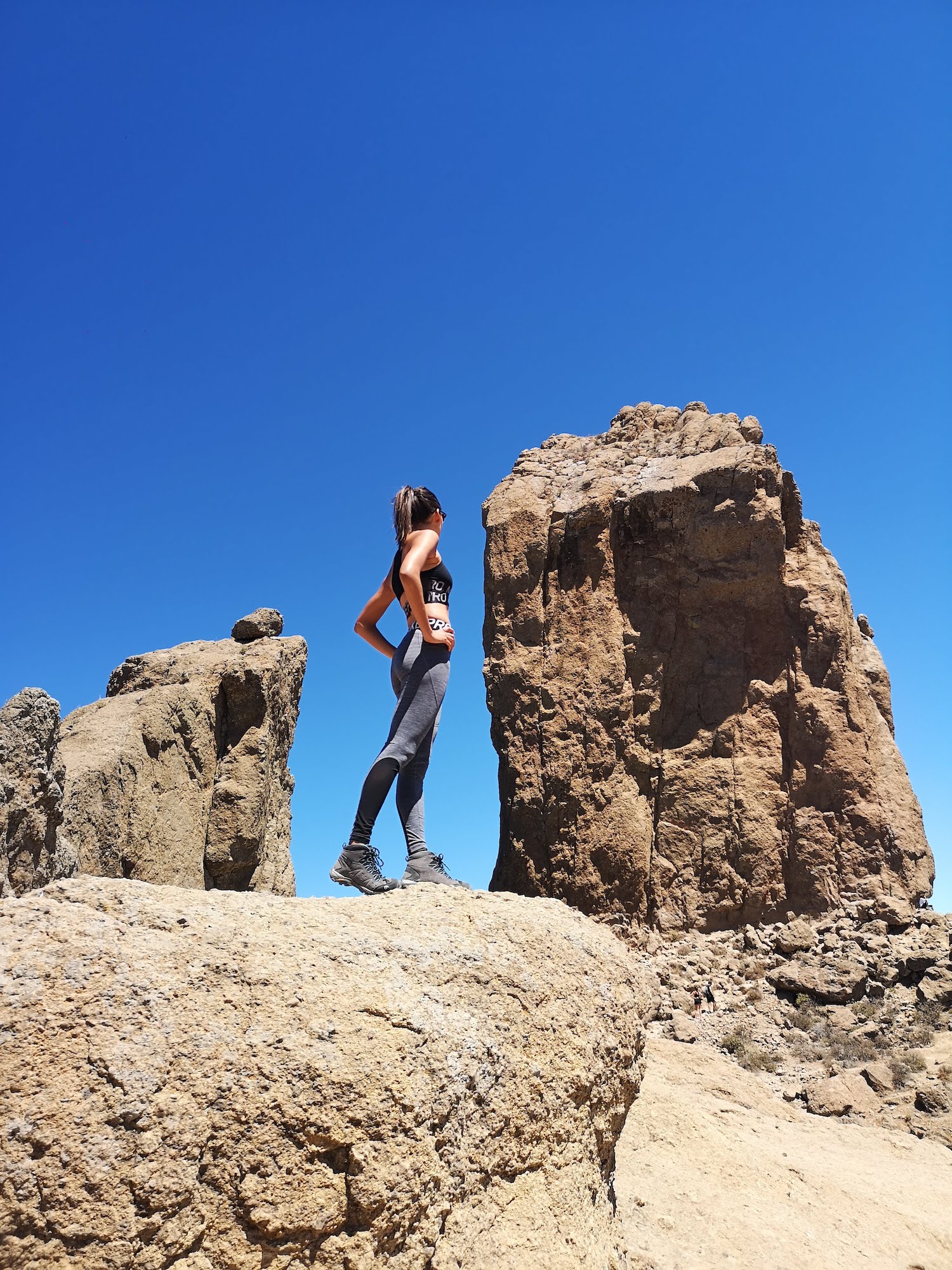
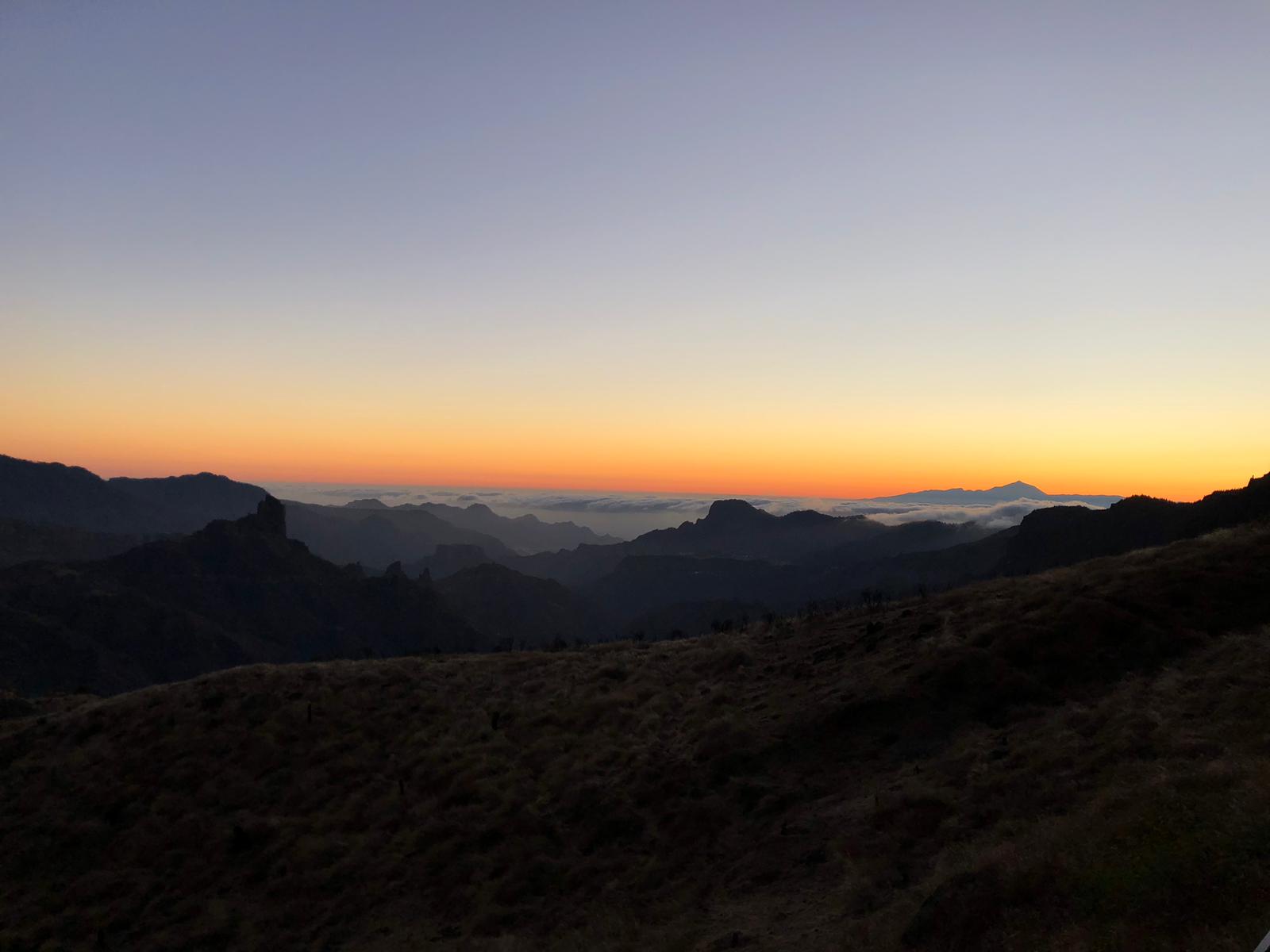
Maspalomas
With a mix of Dunes and Oasis found in the south of Gran Canaria, the Maspalomas Dunes of about 400 hectares is the must-see of the natural attraction. It is the perfect location for sunset watching and includes a fantastic beach. The best direct access to the dunes would be right from the Riu Hotel in Maspalomas
Maspalomas was the place where we chose to spend the rest of our 3 nights on the island.
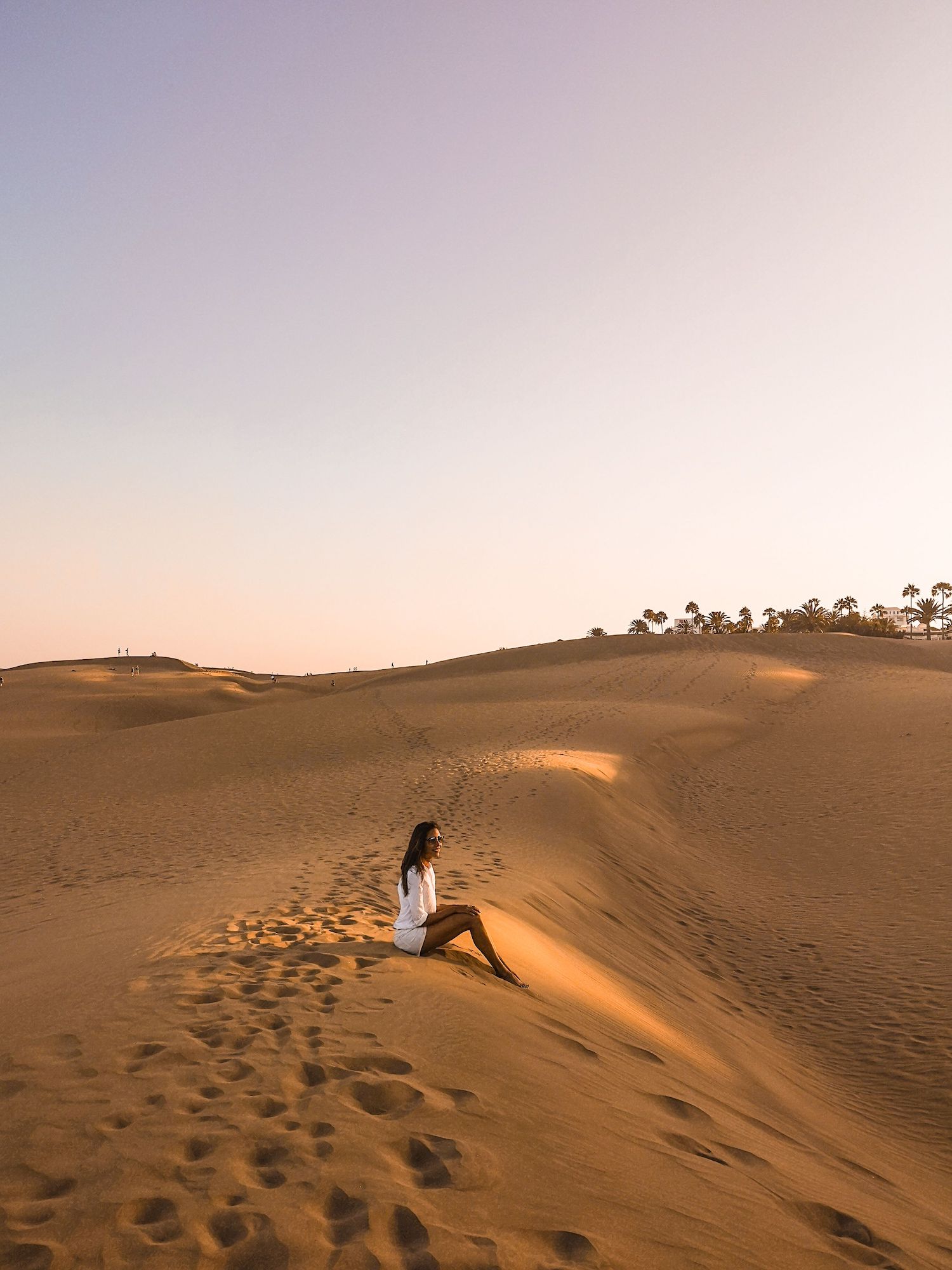
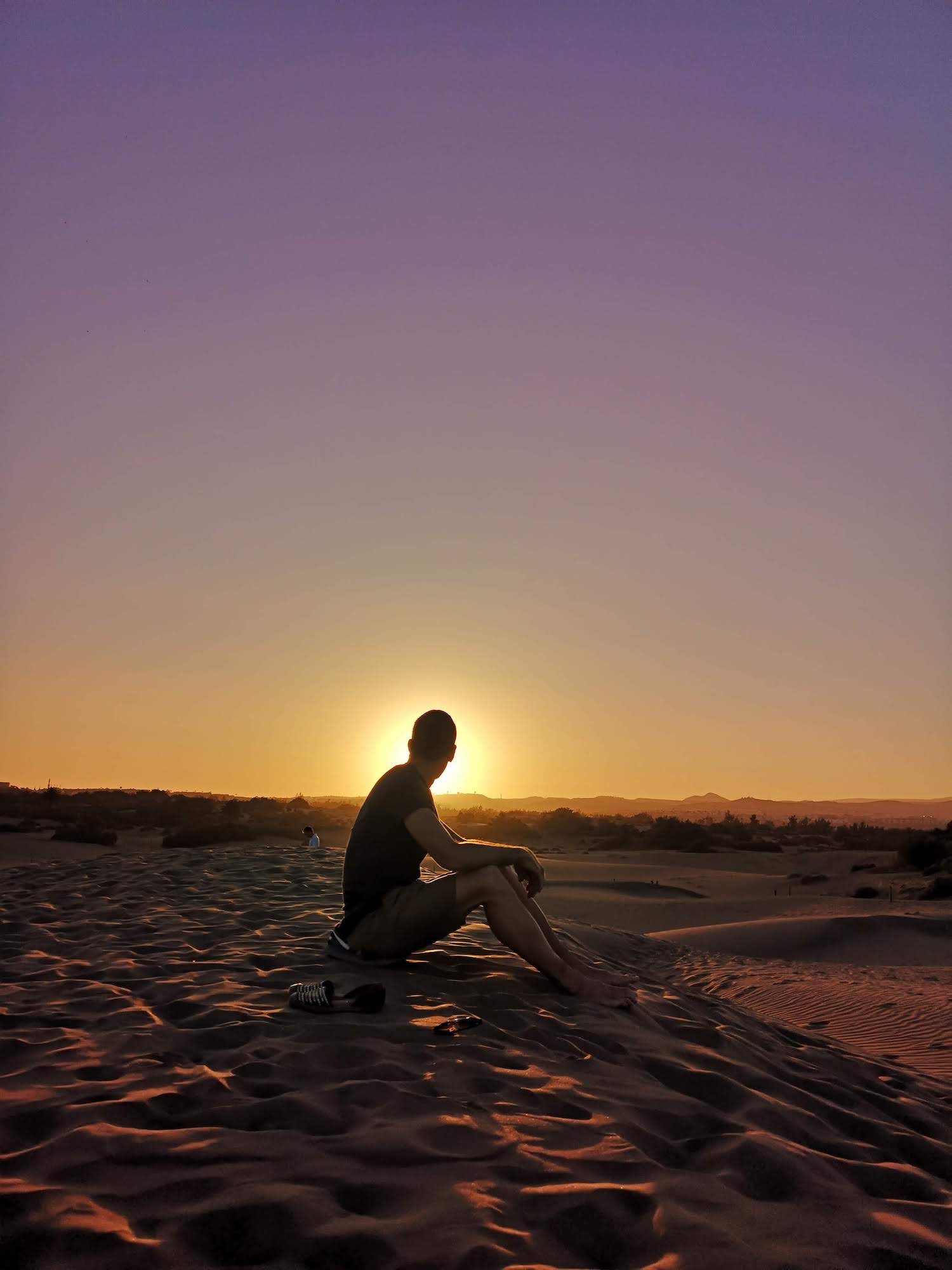
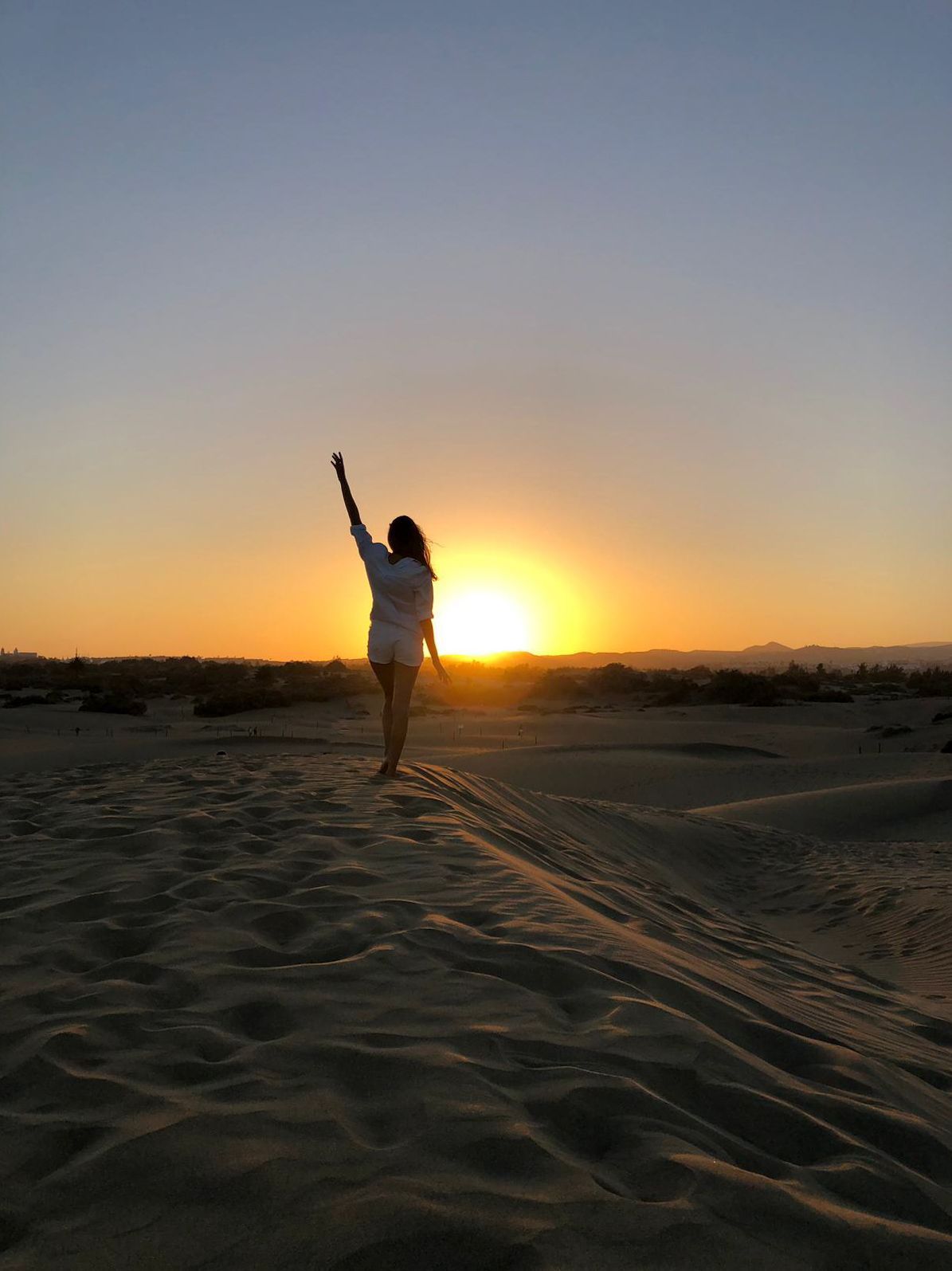
Beaches and Beach Clubs
Beaches:
Anfi del Mar beach
Amadores Beach
Playa del Ingles
Playa de las Canteras
Playa de Mogan
Gran Canaria crowd is young and fun. I could say that it is a small Ibiza with its luxurious Beach Clubs. Here is my referral list to check out:
Amadores Beach Club
Kai Club
Maroa Beach Club
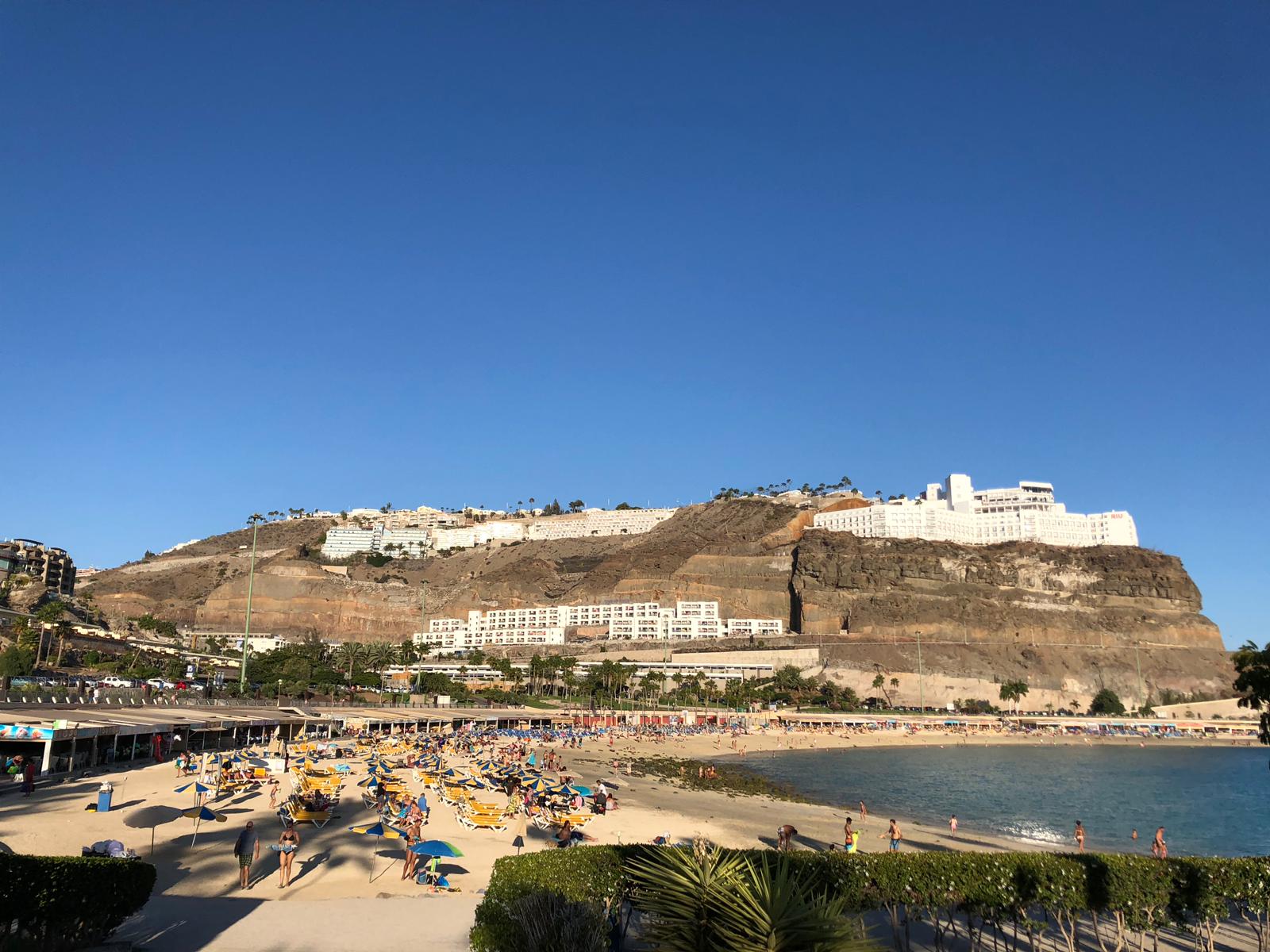
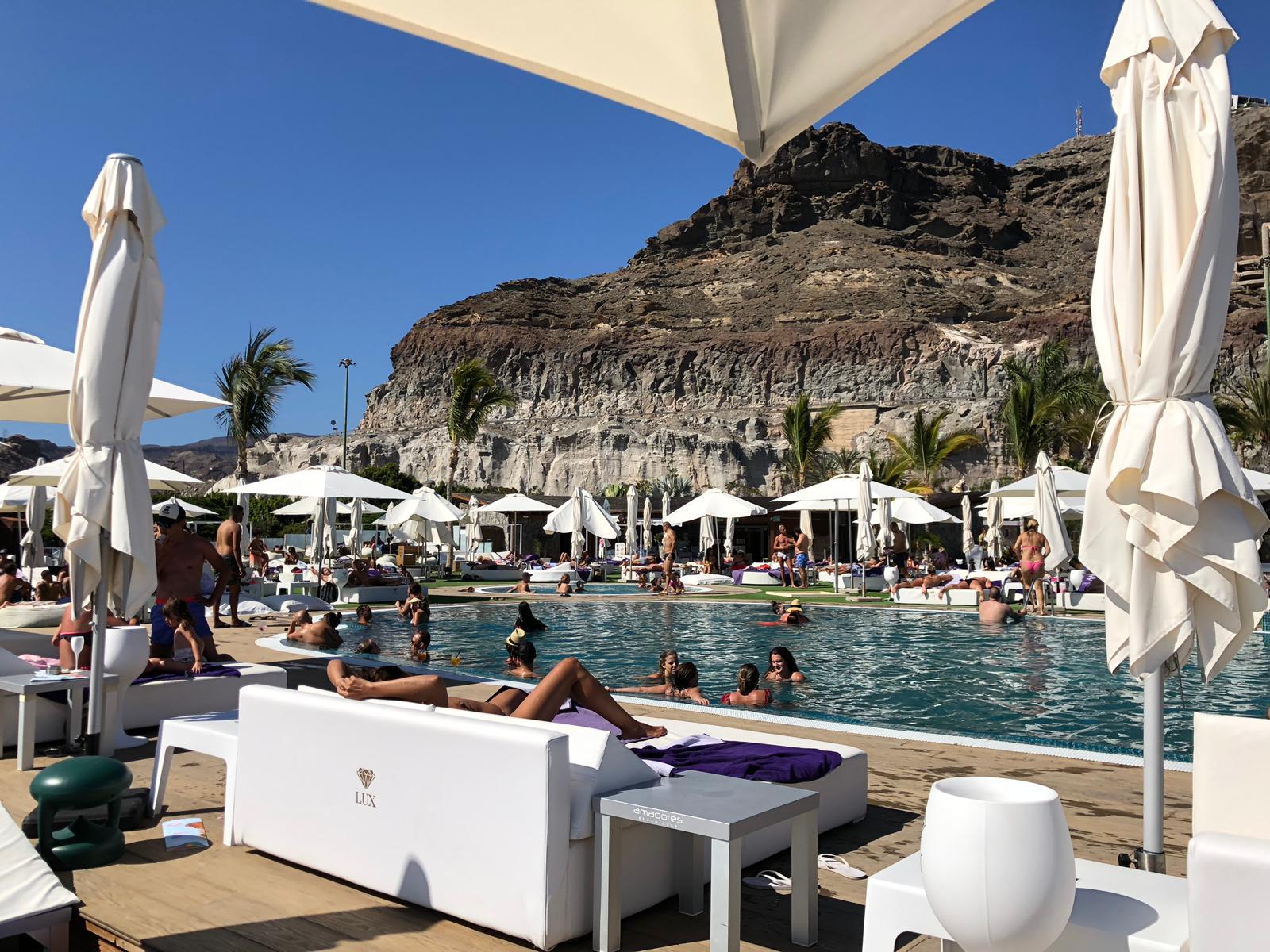
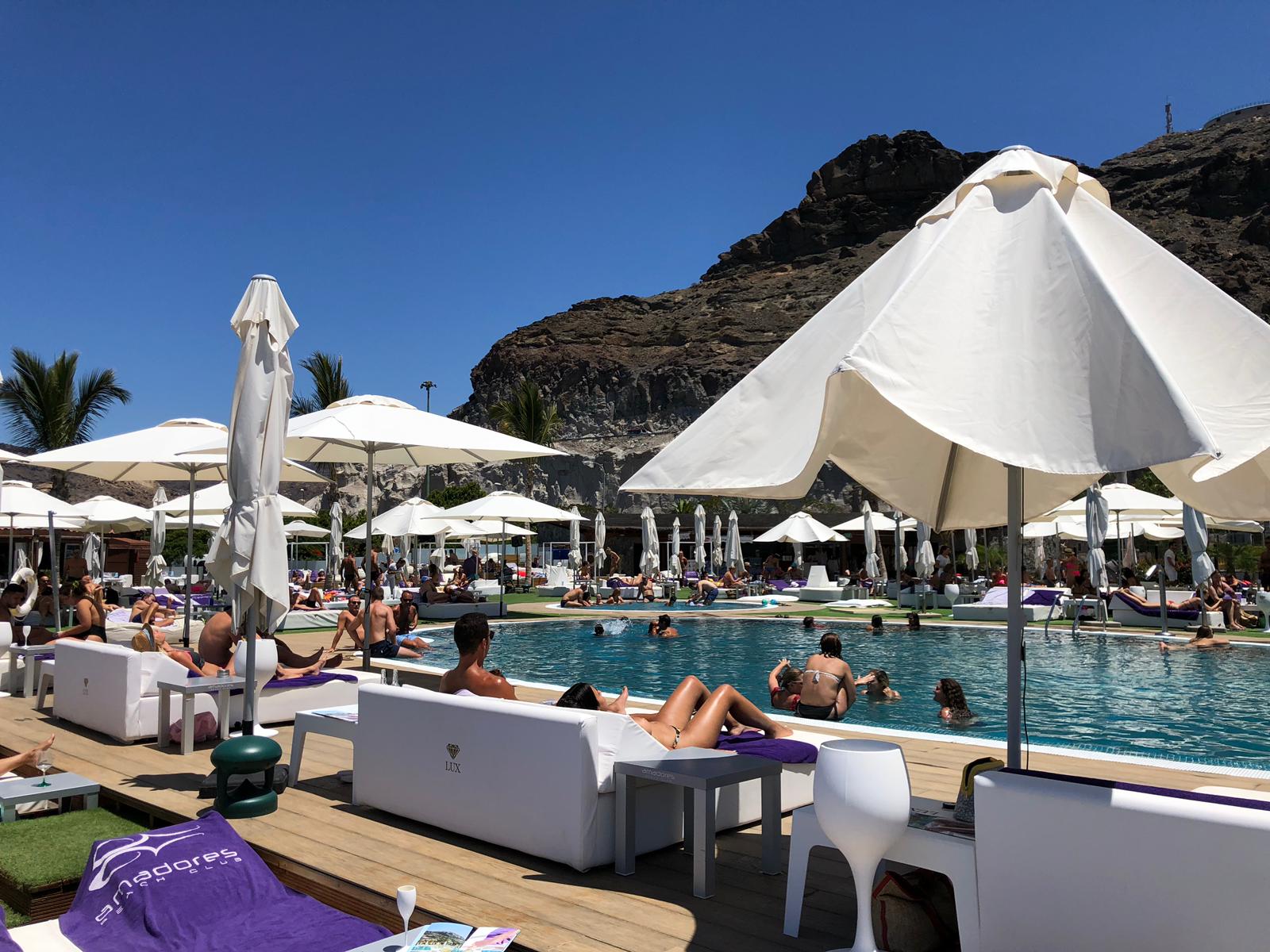
LANZAROTE
Some places in the world are very special and Lanzarote is one of them. Most probably known for its volcanic landscape and the Timanfaya National Park created by a volcanic eruption. Lanzarote has a couple of breathtaking curious places.
We took a 45 min flight from Gran Canaria to Lanzarote. The capital is Arrecife, in the east of the island.
Where to stay in Lanzarote?
Unlike Tenerife and Gran Canaria, the island of Lanzarote is quieter in terms of tourists visits but there are yet so many things to see. The best place to stay would be in Playa Blanca or in Puerto del Carmen or even in Arrecife.
Attractions in Lanzarote?
Beaches of course, we are on an island. Here are my favorite beaches to go:
Papagayo beach and the Playa del Pozo which is found on its right hand side.
Playa Mujeres
Playa de Famara
Playa de los Pocillos
Playa de Matagorda
Playa Honda

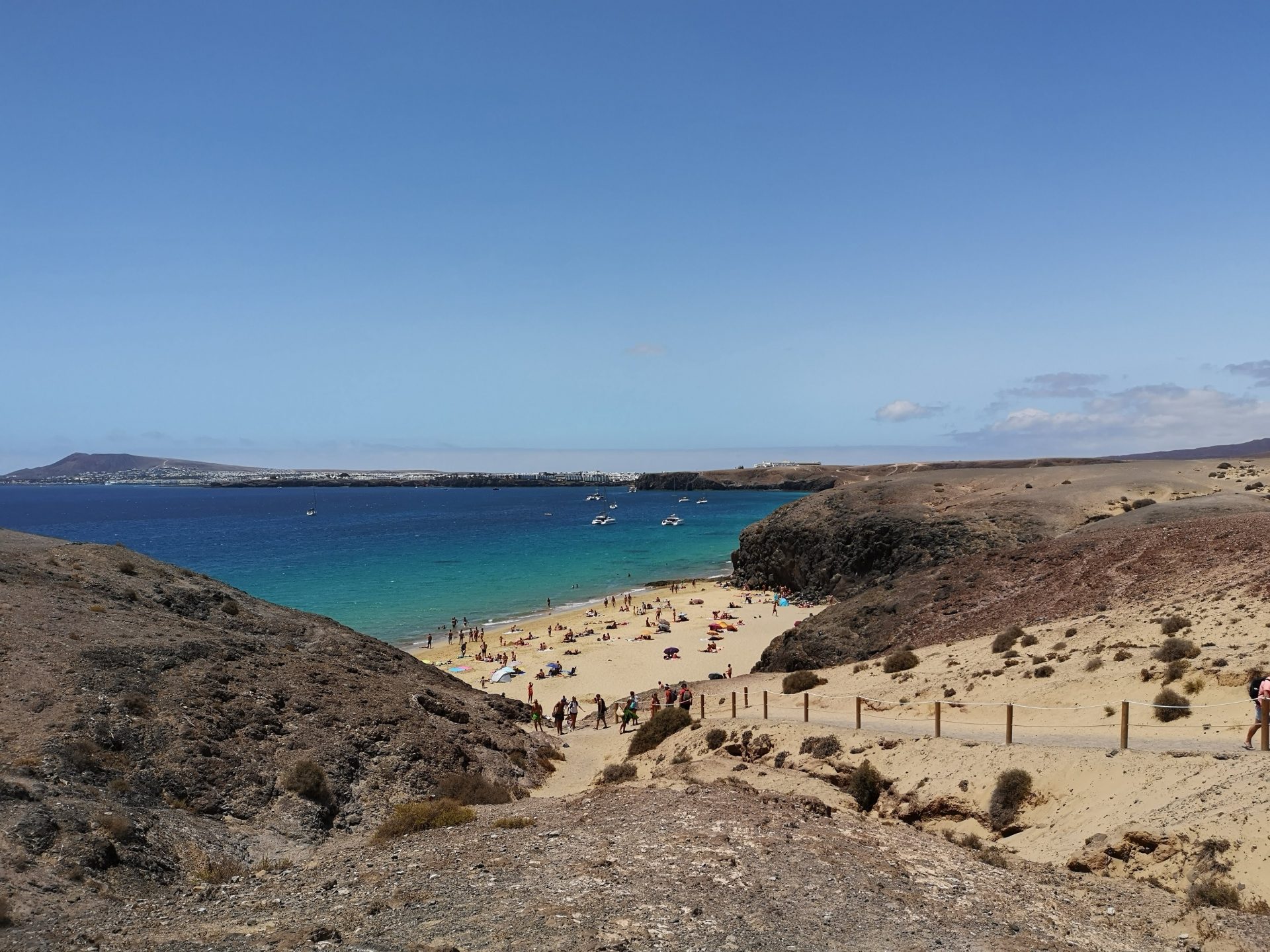
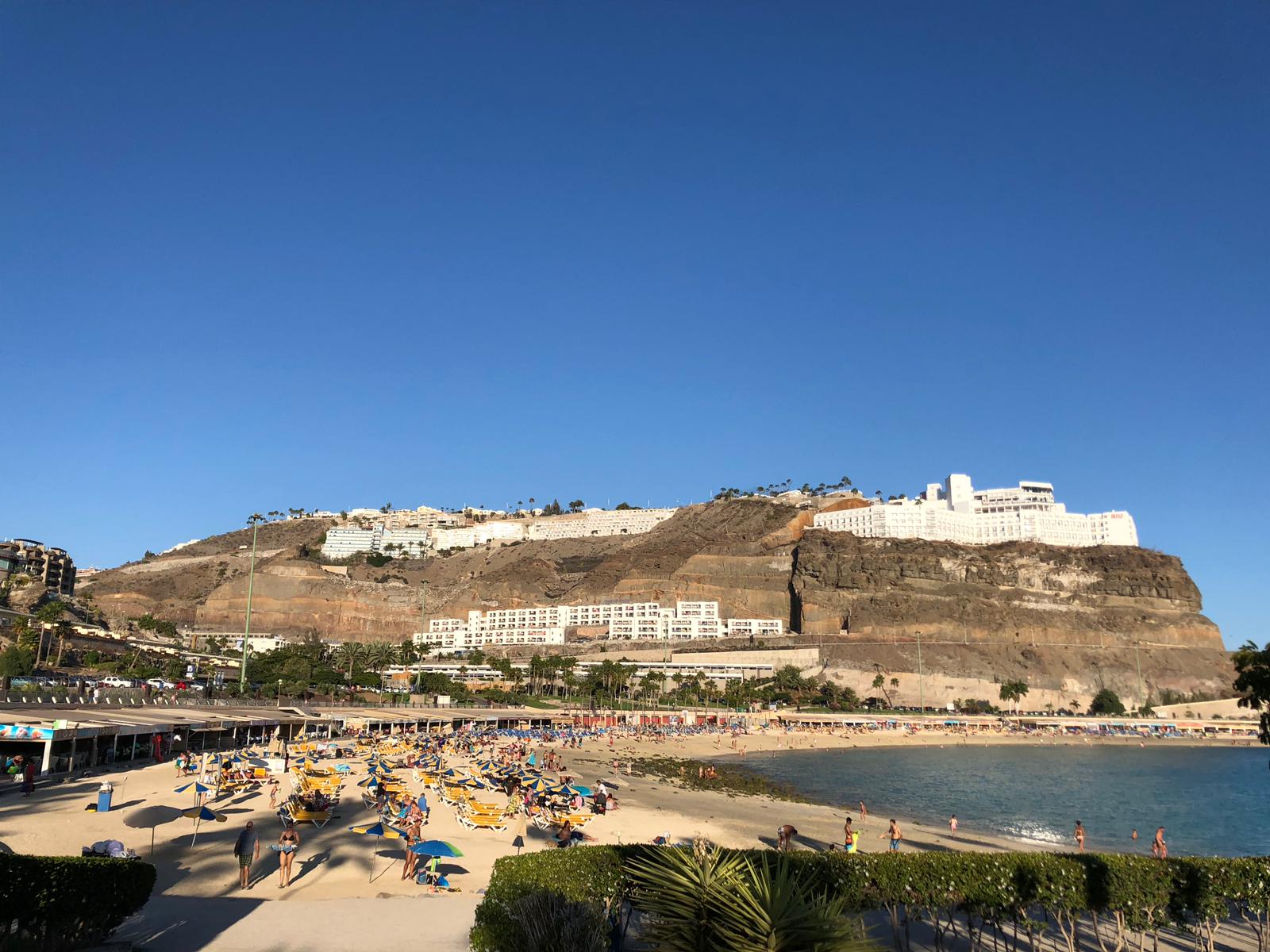
Museums
I must say that there is a concentration of museums on all the three islands we have done, this is because Spanish people are very art and culture oriented. Amazing architects and artists who have left their genius piece of art for us.
One of the Canarian biggest pride is Cesar Manrique, a painter, architect and sculptor. An artist with a clear vision of harmony between art and nature. You can visit his work in Lanzarote, where he is originally from.
Los Jameos del Agua, a natural lake within a volcanic cave
Cesar Manrique used part of a volcanic tunnel to create a natural auditorium of extraordinary beauty, along with a palm garden and an artificial lake. It has a cafeteria inside to have a coffee while admiring at his piece of art.
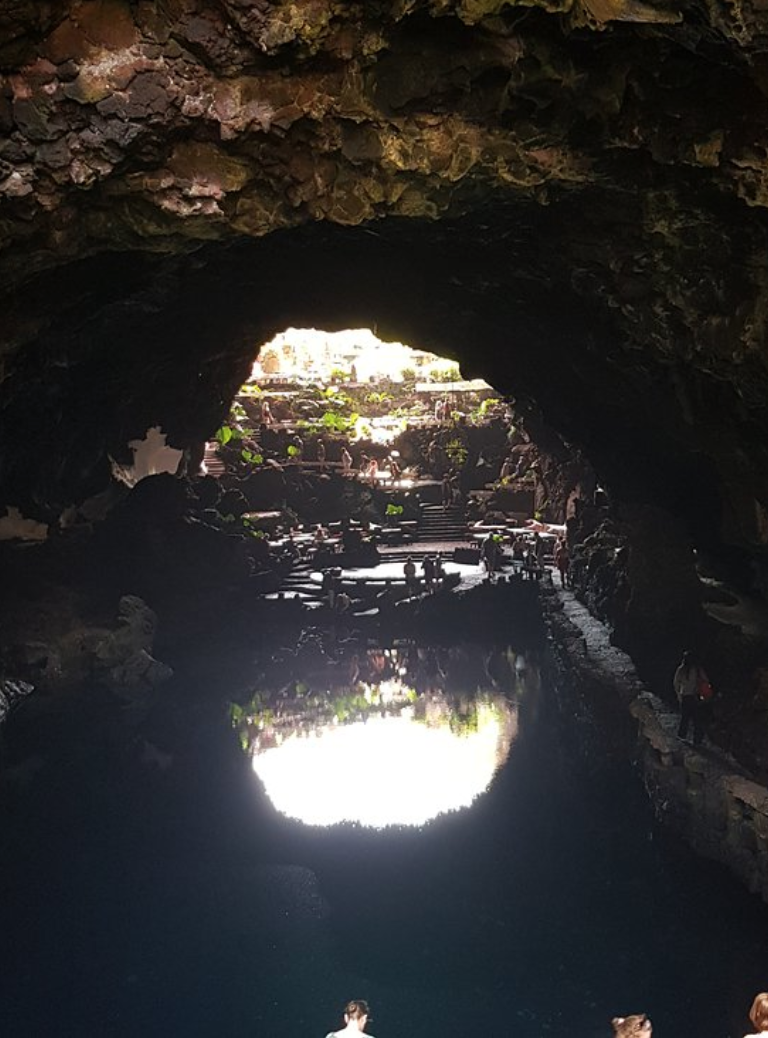

A museum dedicated to César Manrique, The Cesar Manrique Foundation
When you visit the César Manrique Foundation, it is possible to see the most representative work of this artist. The conversion of the house into a museum was directed by Manrique himself just a few months before his death.
The César Manrique Foundation is located in the centre of Lanzarote, in the house known as Taro de Tahiche. The building, constructed on five volcanic bubbles, converted into rooms, is an example of the artist’s own style of architecture.

Lagomar Museum
Originally conceived by César Manrique and designed by the artist Jesús Soto with an architectural vision. The existing lava caves were revamped using wood and things from local shipwrecks, for the beams and lights. Local flora was incorporated in the design: cactus, palm, aloes and bougainvillea, to form an oasis within the rock. The lake, cascades and a series of curvaceous spaces make this place just beautiful and peaceful.
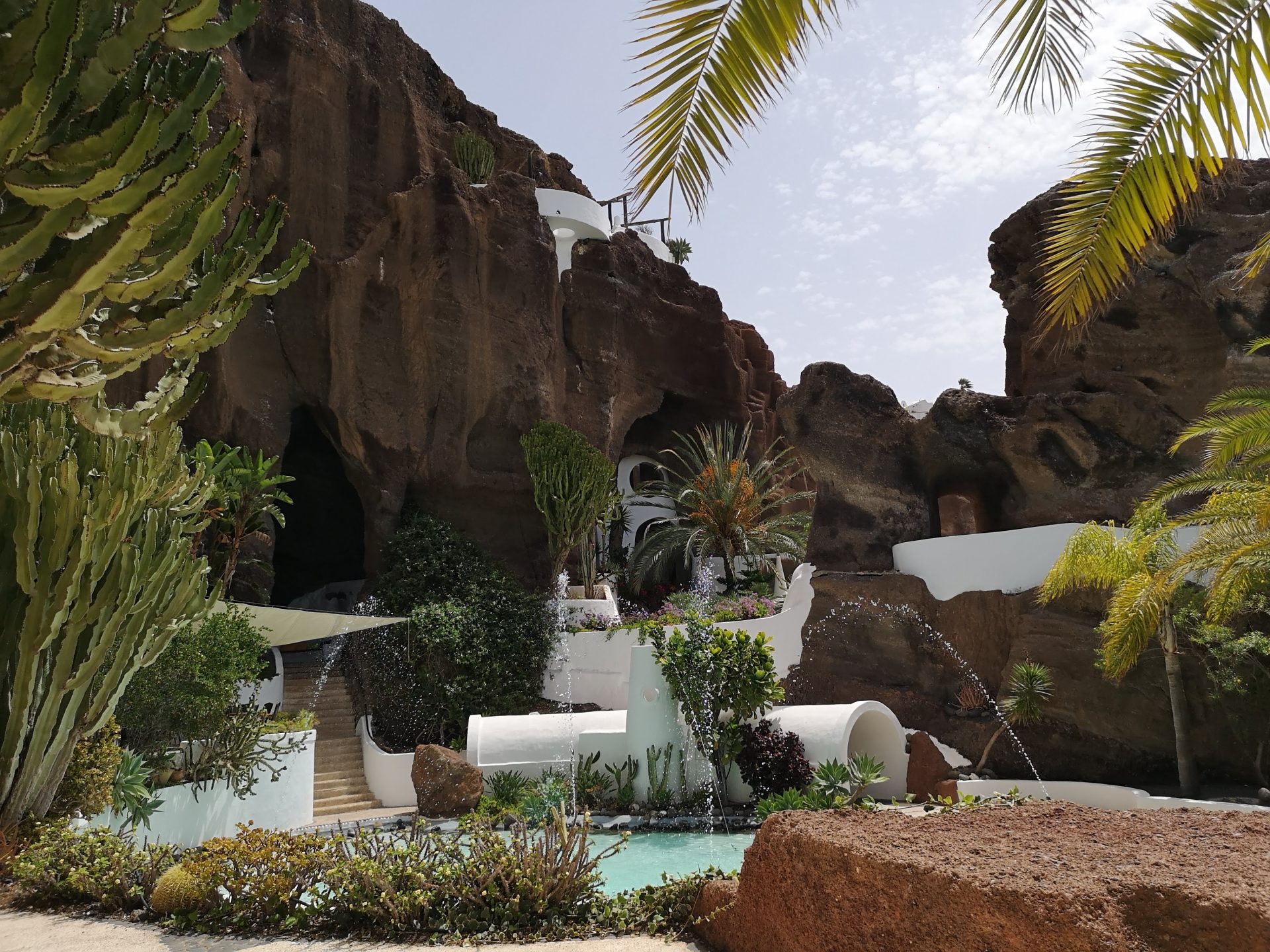
Jardin de Cactus
Jardín de Cactus was the last intervention work César Manrique in Lanzarote. Surrounded by the largest cactus plantation of the island, Jardín de Cactus has around 4,500 specimens of 450 different species, of 13 different families of cactus from the five continents. The green shade of the cactus stands out against the blue sky and the dark volcano creating a harmonious explosion of colour that is impressive.
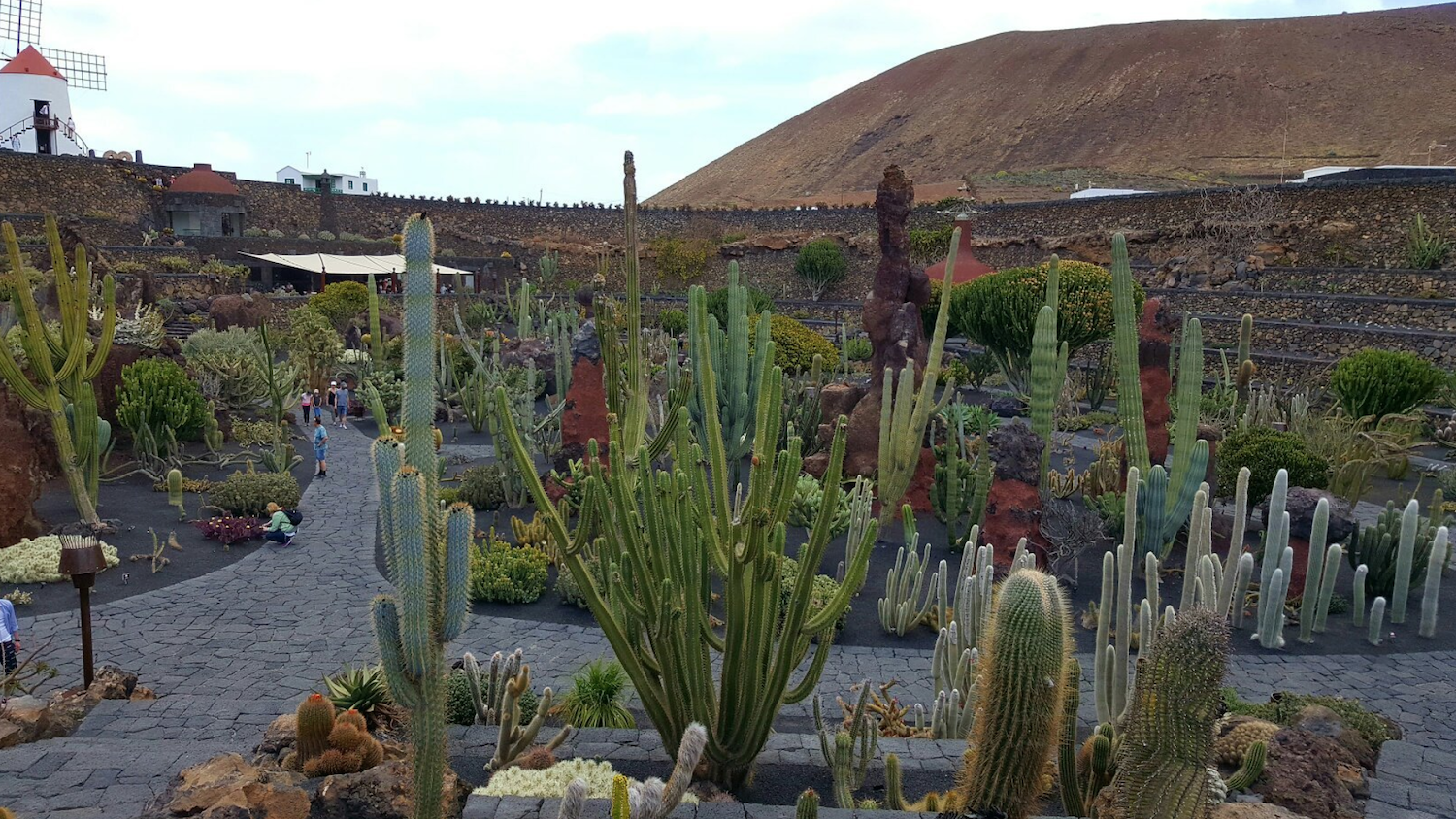
Diving in Lanzarote water, The Atlantico underwater Museum
One of the two worldwide underwater museums at the moment is found in Lanzarote. The Atlantico Museum. The museum was made accessible in January 2017 by the artist Jason DeCaires Taylor and covers an area of 2500 square meters in a maximum depth of 15 meters.
These statues installations strive to bring attention to the environmental and climate change issues which we are facing but is as well a new marine habitat for the Canary Islands underwater species.
Several diving centres propose diving on this site, just make a call to know when diving is scheduled. The Museo Atlántico diving site is a protected area and has an entrance fee of 12 euros per person plus a rental fee which is added for the rental of equipment and dive tanks.
I went diving with https://www.divecollegelanzarote.com/en/ in Playa Blanca.
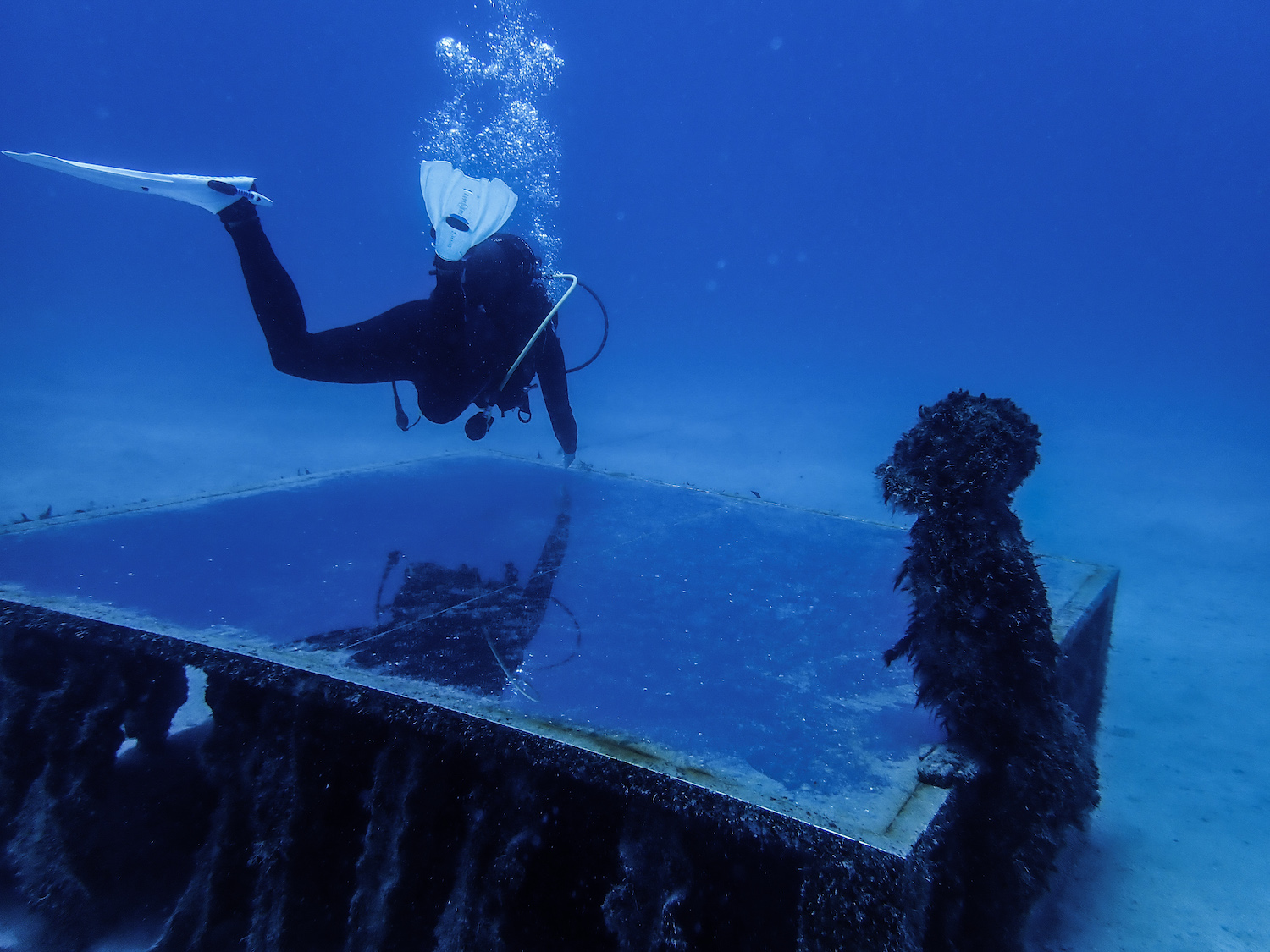
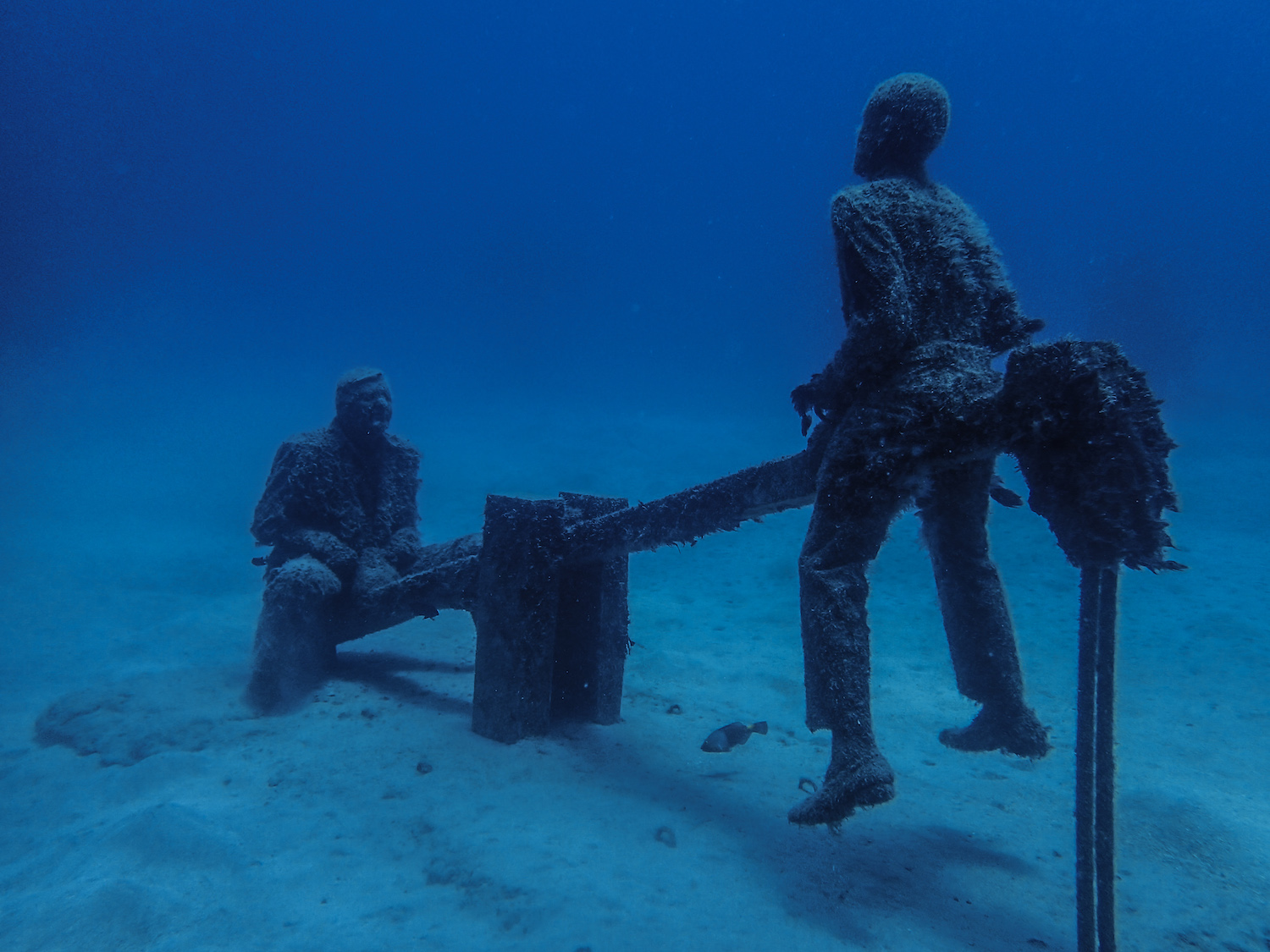

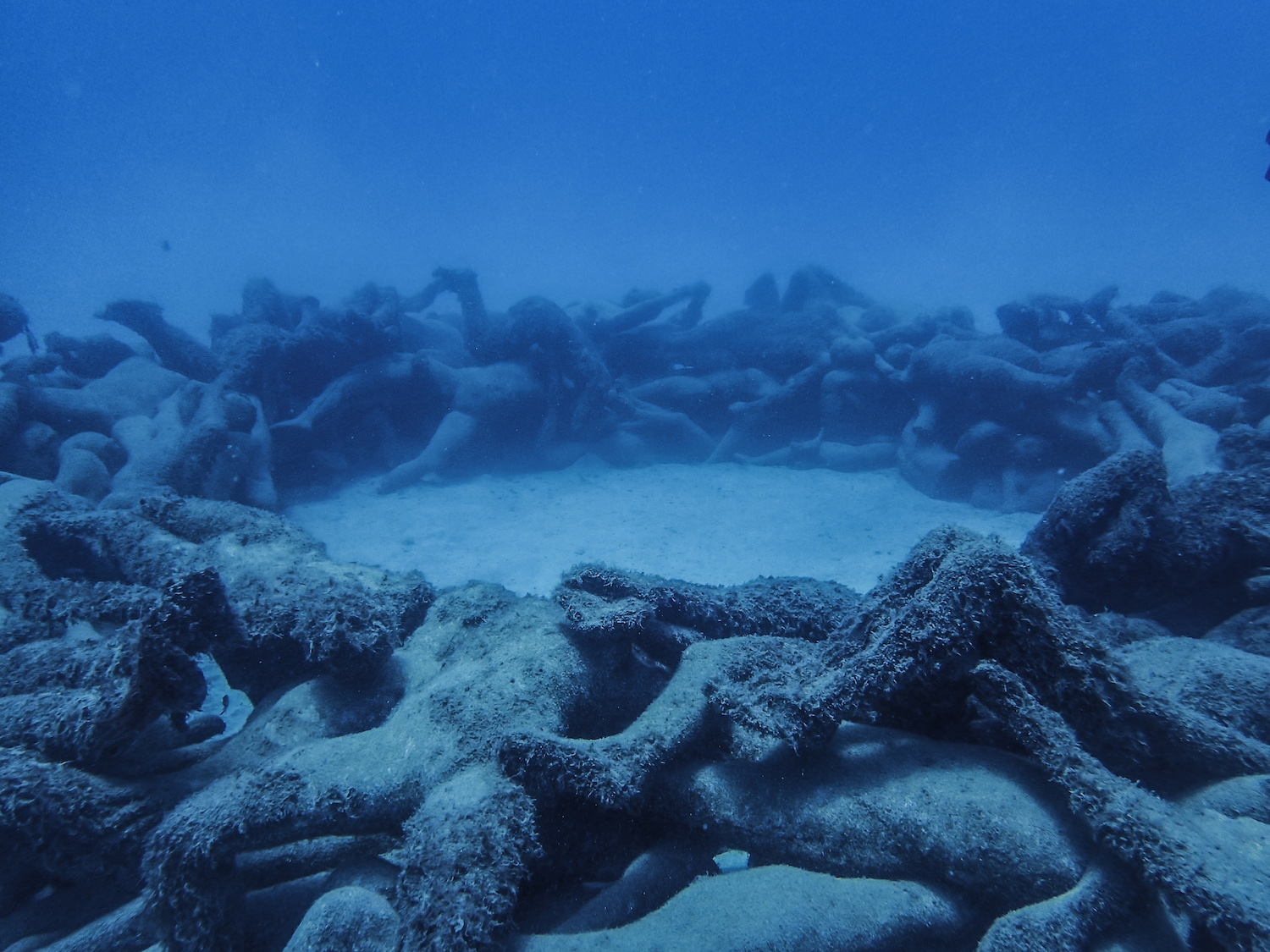
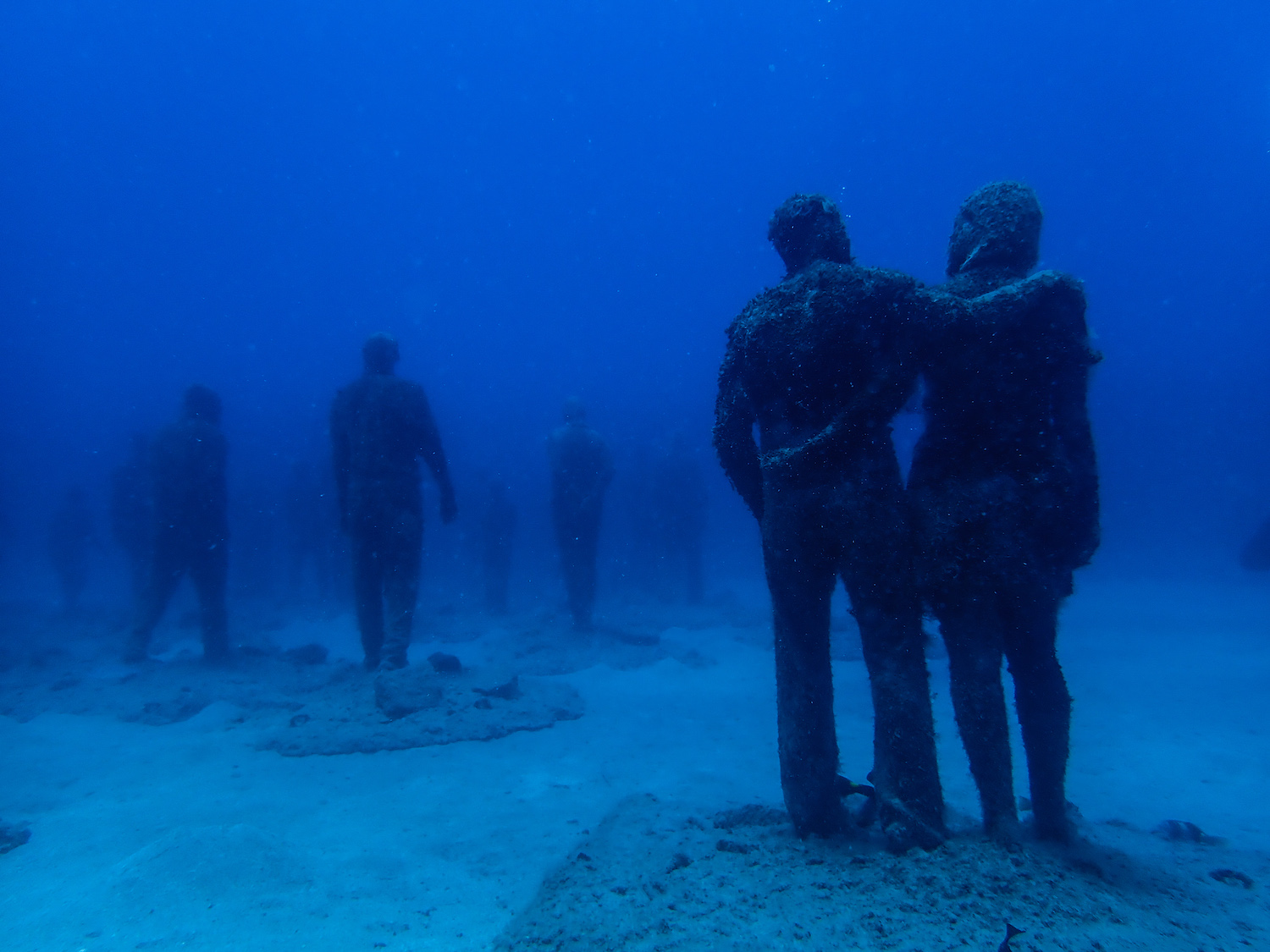

National Park of Timanfaya
When we talk about Lanzarote, the next thing that comes up is the National Park of Timanfaya. You will embark on an exciting lunar tour, right into the heart of the national park. See the breathtaking colors and shades of the rocks, take in the sulfur smells and imagine the time where the volcano erupted. The Montañas del Fuego (Mountains of Fire) is located in the Parque Nacional de Timanfaya, where you can enjoy the spectacular landscape and see volcanic activity. This excursion can only be done by a guide from the Timanfaya National Park. You cannot go there on your own.
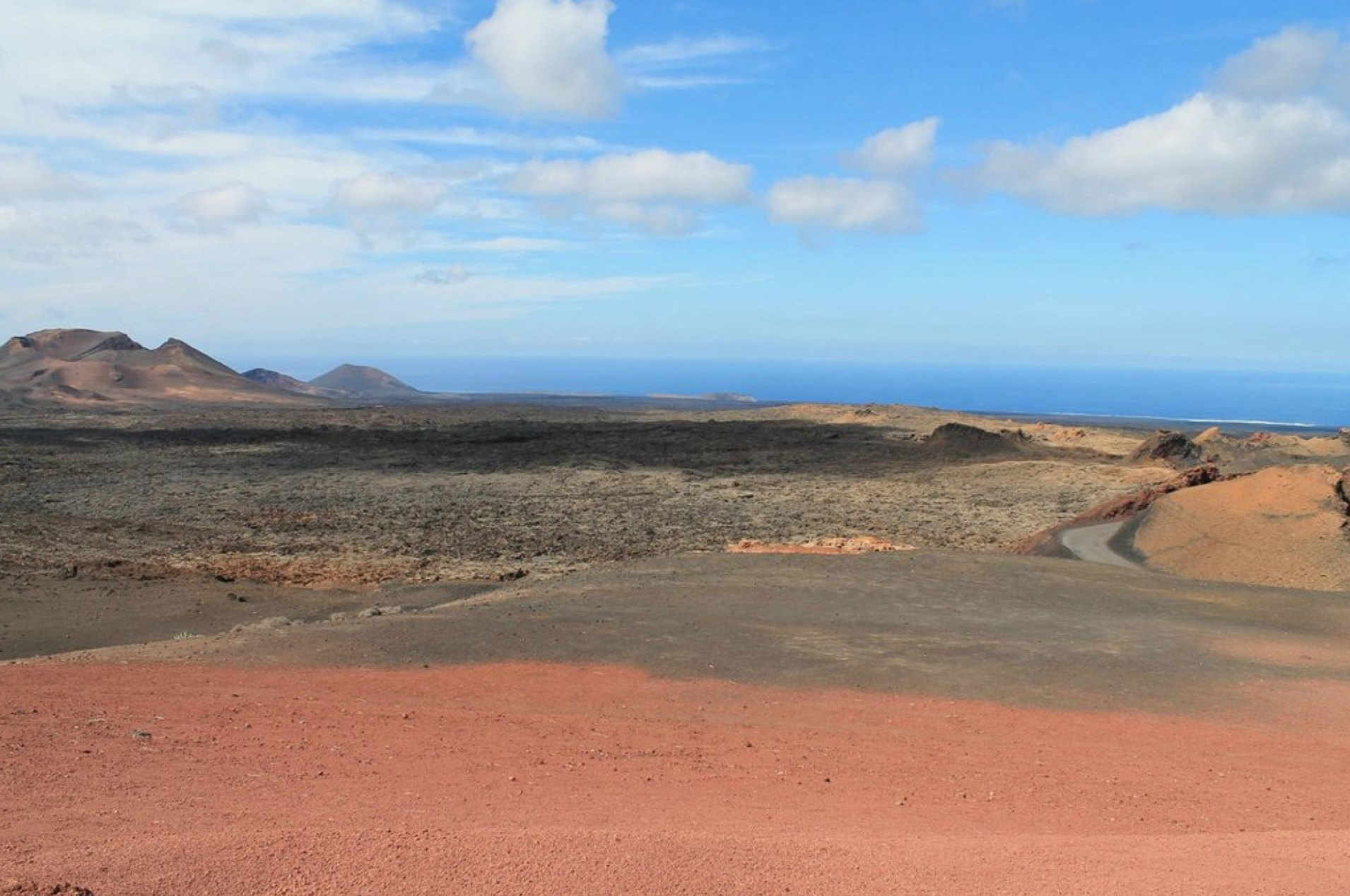
Go on a little Road trip
All of the below can be done in a day, at least this is what we did and if ever you want to do it too here is our itinerary.
South West Itinerary
Starting from the east in Arrecife, we drove up to La Geria, the wine-growing region where most of the reputed Bodegas are. Bodega in Spanish means vineyards. Lanzarote offers an exceptional wine tour degustation in there several Bodegas present in the region of La Geria. Some of them would be:
Bodega La Geria
Bodega Rubicon
Bodega Strtvs
Bodega El Grifo the oldest winery on the island, not only serves up quality reds and whites but also has a museum that tells the story of how Lanzarote came to be such a grape-growing power.
What is special about Lanzarote vineyards and wines is that the grapes grow on the hillsides in volcanic soil but also in layers of ashes from a series of violent eruptions leaving thick layers of ash and volcanic pebbles on the ground. The soil and weather conditions which face Lanzarote over the years have made the local farmers perfect a method for protecting the grapes.
Scientists soon found that the new layer of nutrient-rich volcanic soil was ideal for farming certain types of crops. Its spongy consistency allowed it to absorb water quickly and retain moisture for long periods of time. The ash also acted as a kind of insulator, keeping the soil temperature consistent even if the air temperature fluctuated.
For the most part, post-eruption Lanzarote has become an ideal a wine-growing region.
What are the circular barriers made of rocks for around the vine?
The young plant is put in the ground after the farmer scrapes out a wide, shallow hole in the volcanic soil. The young vine is placed into this human-made depression. Then, larger volcanic stones are put around the wind-facing edge of the hole, forming a low, semicircular barrier. The height of the makeshift wall and the depth of the hole are important. The young vine still has to be able to soak in the sunshine without being hampered by shadows, and the hole has to be shallow enough that the plant is still getting nutrients and trapped water from the volcanic soil.
Each Lanzarote vineyard has thousands of these holes and walls, each holding a single vine.
Consistent winds blow in off the Atlantic, the stiff breezes can wreak the young vines, pushing them over and be completely uprooted.
Grapes thrive in the ashy soil, and the island’s relatively high slopes offer ideal elevation for the vines. The cool breezes from the Atlantic and the warm temperatures from the African mainland give the vineyards the kind of warm-to-cool variation that grapes need. Days are warm and almost always sunny; nights are very cool. The difference in temperature, known in the viticulture world as the diurnal temperature variation, is important for grapes to develop both the right amount of acidity (from cool nights) and sweetness (from warm and sunny days).
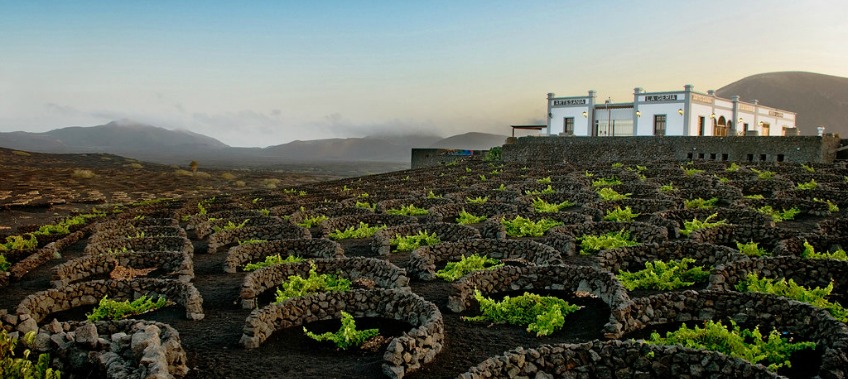
After a wine tasting tour from the several Bodega and trying out local food we continued our road trip through Yaiza to go to the west part of the island.
First one on the way is the Salinas de Janublo. These are salt pans where water from the lagoon is pumped to the pans where it evaporates to leave salt behind. It is a beautiful landscape and colourful.
The second stop is at Los Hervideros. It is a range of cliffs and underwater caves formed by the solidification of lava an erosion. You can see the powerful waves forcing their way into the labyrinth of caves, it looks as if the sea is bubbling and boiling.
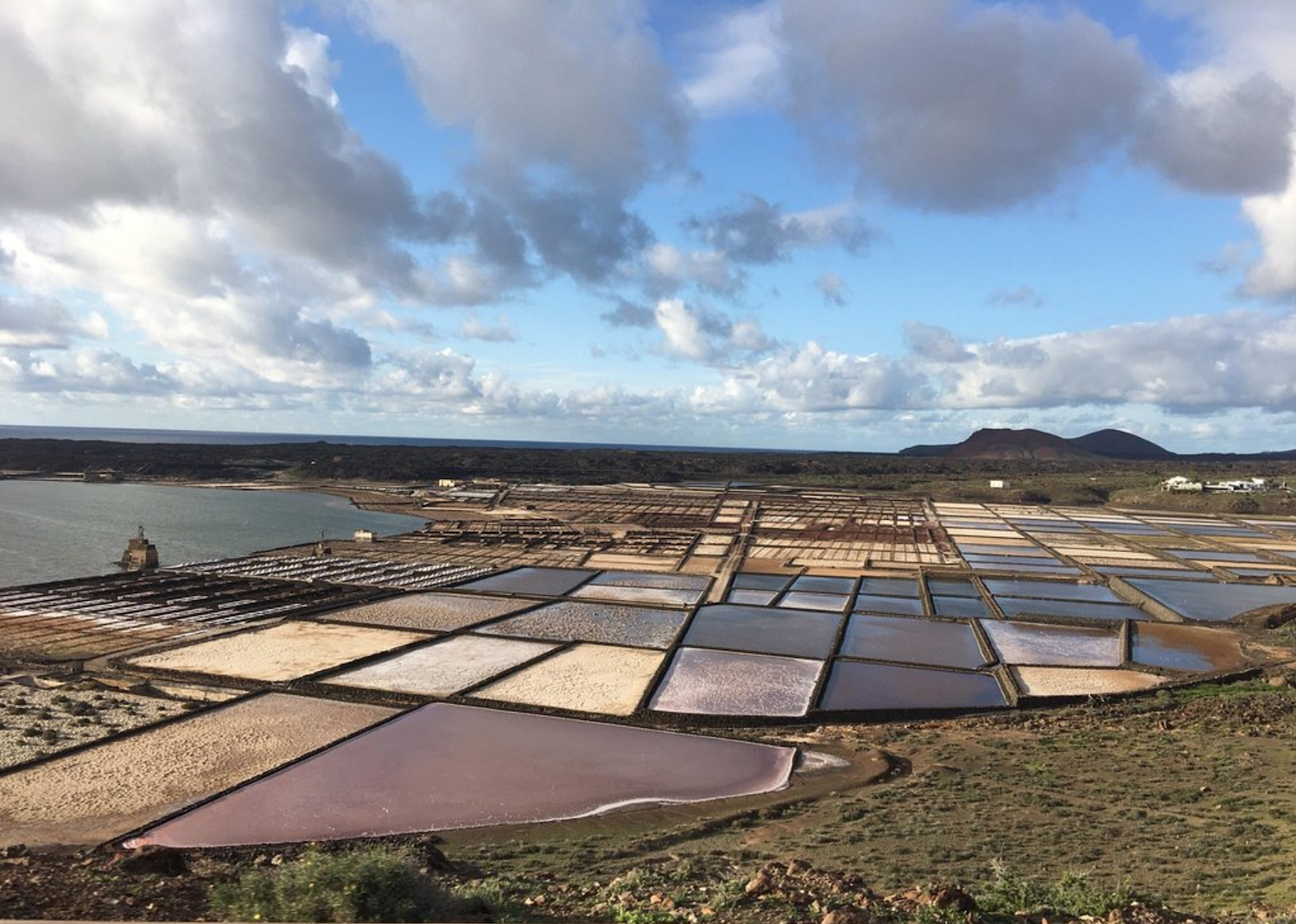
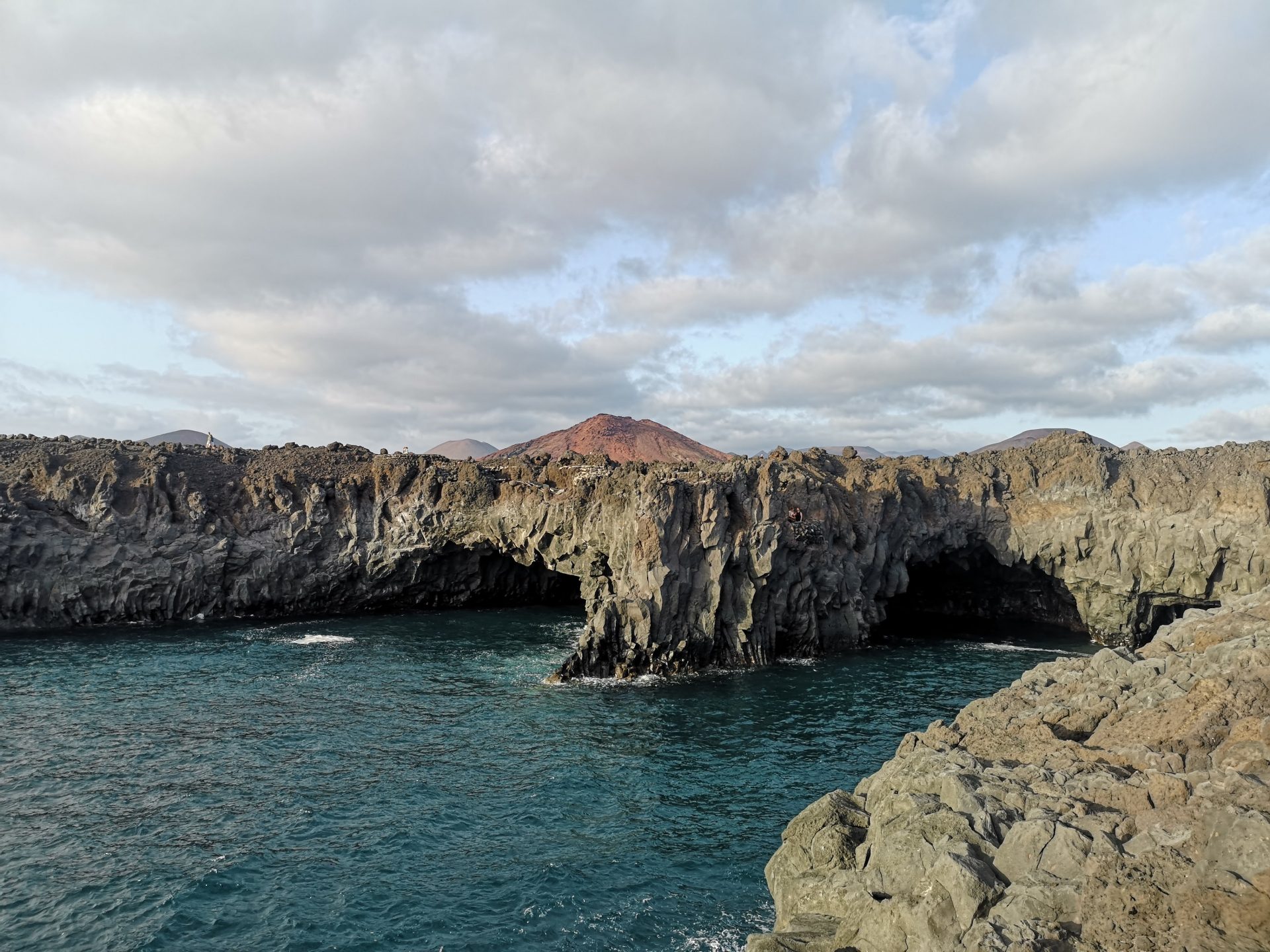
Right after in El Golfo is the Charco Verde, the green lagoon which is inside a big crater open to the sea. This unusual green colour is specifically due to the accumulation of seaweed. The lagoon is connected to the ocean by underground cracks and is separated from the sea by a black sand beach. It has a unique viewpoint. You can go down to the beach to watch the sunset and finish the day at one of the restaurants by the sea in El Golfo.
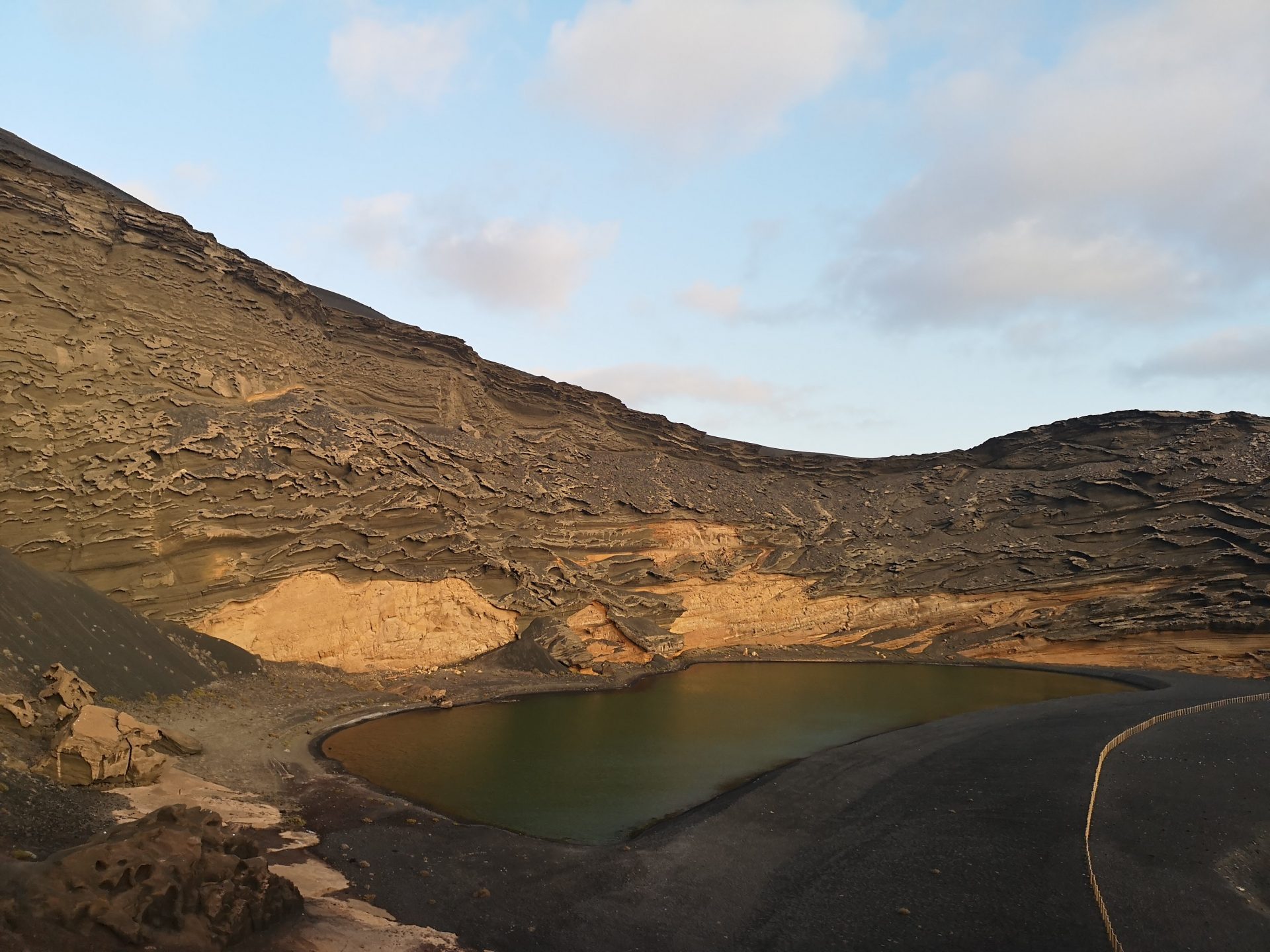
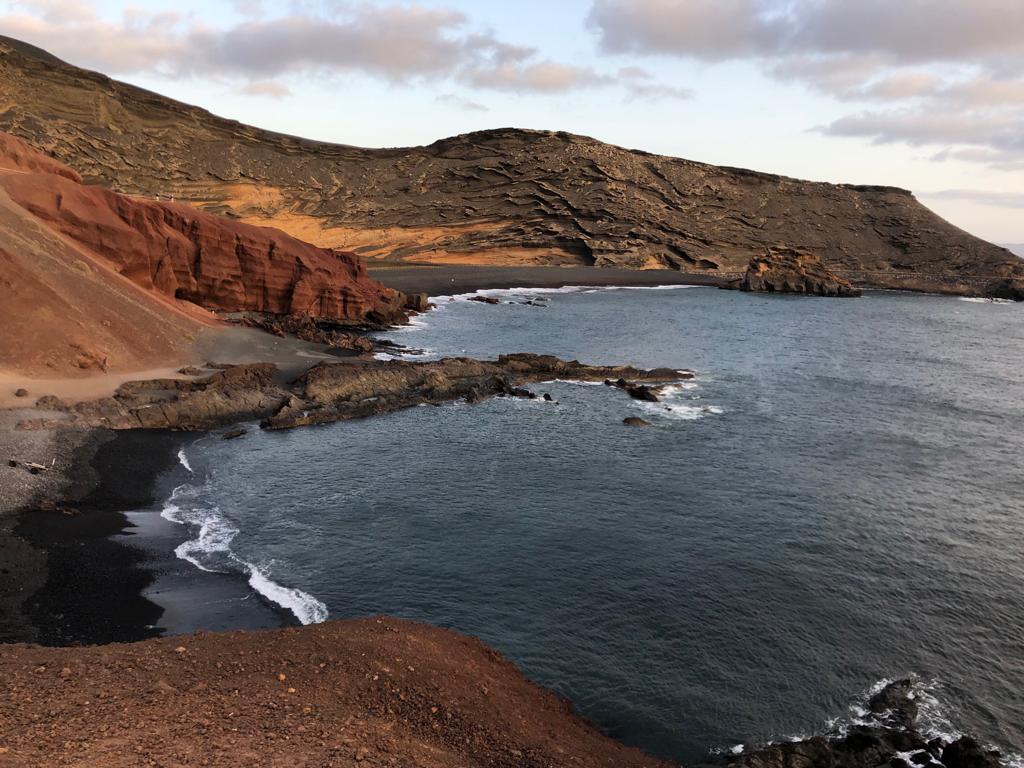
The next day we went to discover the northern part of Lanzarote. Another small road trip where we also made sure we checked out the rest of the nice places. So here is our itinerary of that day.
Our first location was the Lagomar Museum like mentioned earlier, then we moved to Casa Museo Cesar Manrique in Haria to watch his lifetime work and also his house which he converted into a Museum.
The next stop after this was the Mirador del Rio. This viewpoint is just amazing, a spectacular and total clear view over the island La Graciosa. The eighth island of the Canarian archipelago.
To go to La Graciosa, you need to take a boat from Orzola, in the north of Lanzarote.

Going down from the Mirador del Rio, the two other must-sees are the Cuevas de Los Verdes and the Jameos del Agua. And if you are not tired the last stop, go to the Jardin de Cactus.
It was a wonderful two weeks overall spent in the Canary Islands. I hope you enjoyed reading my travel experience and that you might also consider putting the Canary Islands on your bucket list if it isn’t already.
xx Love Katia xx

Cuba – The classics keep rolling
Read MoreQuarantine in Mauritius – All you need to know
Read MoreSeychelles Top Beaches
Read MoreRodrigues Immersion
Read MoreMy Makeup Looks
Read More